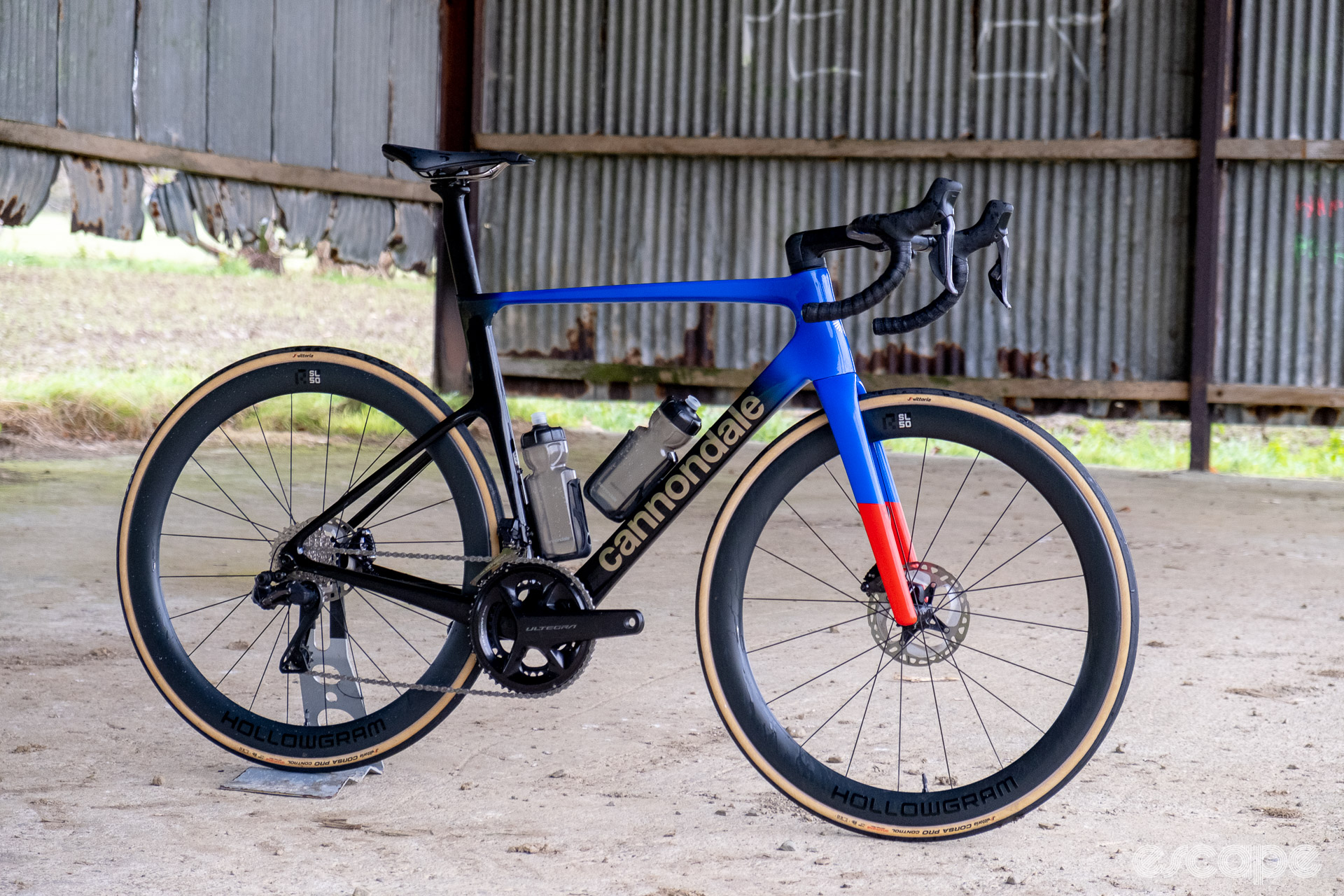I never quite “got” the SuperSix Evo vibes. As almost the last round tube frame standing in the WorldTour and then a “so-so” take on the aero-lite bike with a few slightly odd characteristics, it never quite captured my (performance-based) imagination. Yet, despite the lack of visibly obvious evidence of its performance soul, the SuperSix Evo has an almost unrivalled reputation as one of the most balanced and performant road racing bikes on the market.
Having never ridden an Evo I was left trying to round hole this square peg mismatch in what I was seeing of the SuperSix and what I was hearing about the same bike. That was until earlier this year when Cannondale unveiled a new, lighter, stiffer, more aero SuperSix Evo (SSE), or, in other words, an aero peg for my aero hole. Better yet, Cannondale provided a new Evo for me to review and finally get a grasp of what the SuperSix fuss is all about.
The short of it: Cannondale’s latest iteration of its flagship road racing rig balancing the traits that made the SuperSix a rider favourite with modern performance.
Good stuff: Superb ride, confidence-inspiring balance and composure, SuperSix geometry, feels aero.
Bad stuff: Price, mismatched thru-axles, 25 mm tube type only tyres on these rims, Vision bars, not the stiffest nor snappiest.
Total weight: 7.5 kg/ 16.5 lbs (without pedals)
Price: USD $8,300 / AUD $12,000 / £8,250 / €9,000
The new Evo, now in it’s fourth generation, is Cannondale’s second take on the do-it-all “aero-lite” bike and, as you might expect, features teardrop aero profiles, truncated tubing, hidden cable/hose routing, a sleek new look, and all with the promise of a UCI-weight-limit-challenging package with the top-spec offerings. In marketing speak, Cannondale is promising a bike that will make you “faster everywhere.”
For all the SuperSix’s pedigree, the Evo 3 was not the finest moment in its lineage. That said, it had its fans, and as a well-timed foray into the “do-it-all” category, it ultimately presented a head start from which to develop this new-generation Evo. In fact, it’s safe to say the base formula for the new bike is an evolution of that outgoing Evo rather than a complete overhaul. Nevertheless, those refinements make for major updates throughout the new bike, and they are almost entirely for the better.
Take the internal cable routing for example. On the face of it both bikes hide the cables inside the frame and out of sight. Nothing to see here, literally. Digging deeper, though, the new cable routing is one of the best examples of how different the new bike is. The Evo 3 routed the hoses through the head tube in front of the headset bearing, which solved some problems but created others, namely bar-turn limiters and aesthetic challenges. Plus, without reducing the width of the head tube, it seemed to be much of the aero pain without the gains. If the outgoing SuperSix’s internal routing solution proved anything, it was that the more typical through-the-headset routing is probably the best of a bad bunch when it comes to hidden-cable solutions.
Fast forward to the new bike, Cannondale has, in some ways, conceded defeat in running the cable routing through the headset bearings, but, to its credit, in doing so, they’ve at least improved the hidden cable pain-to-gain ratio. The result is a bike that not only features internal cable routing but also features a significantly narrower head tube. Aerodynamically speaking, that’s a win-win, but functionally, it’s more difficult to deliver.
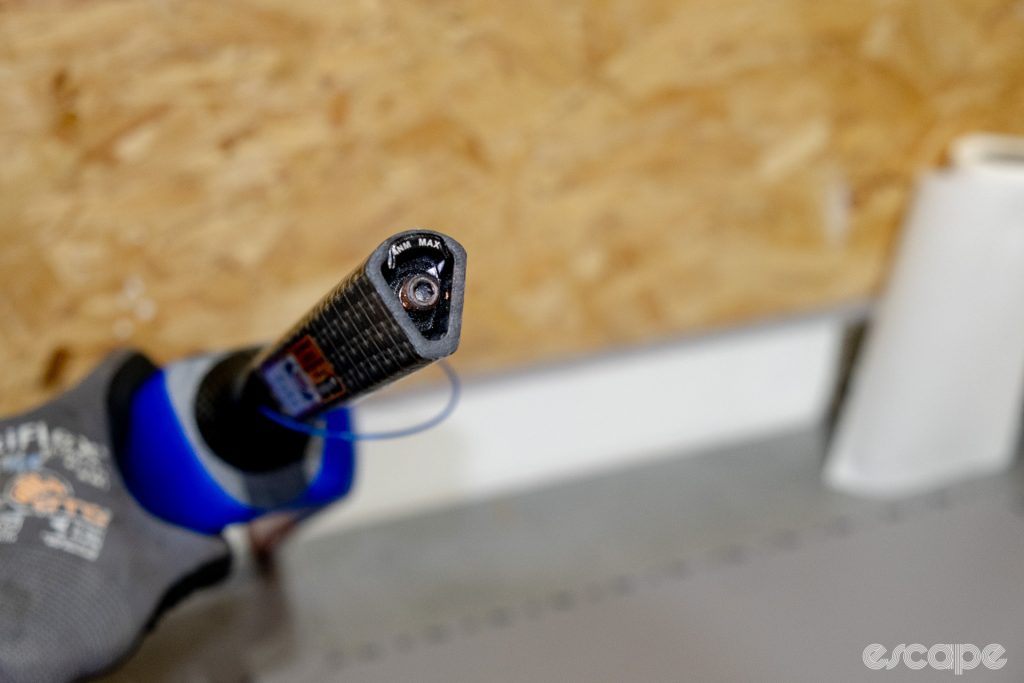
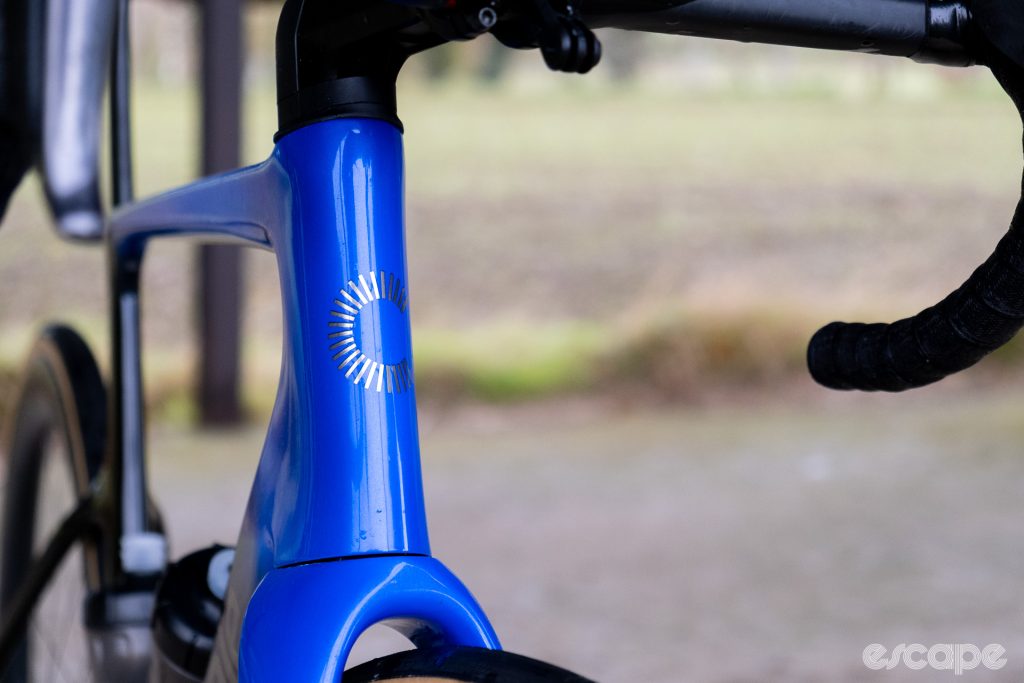
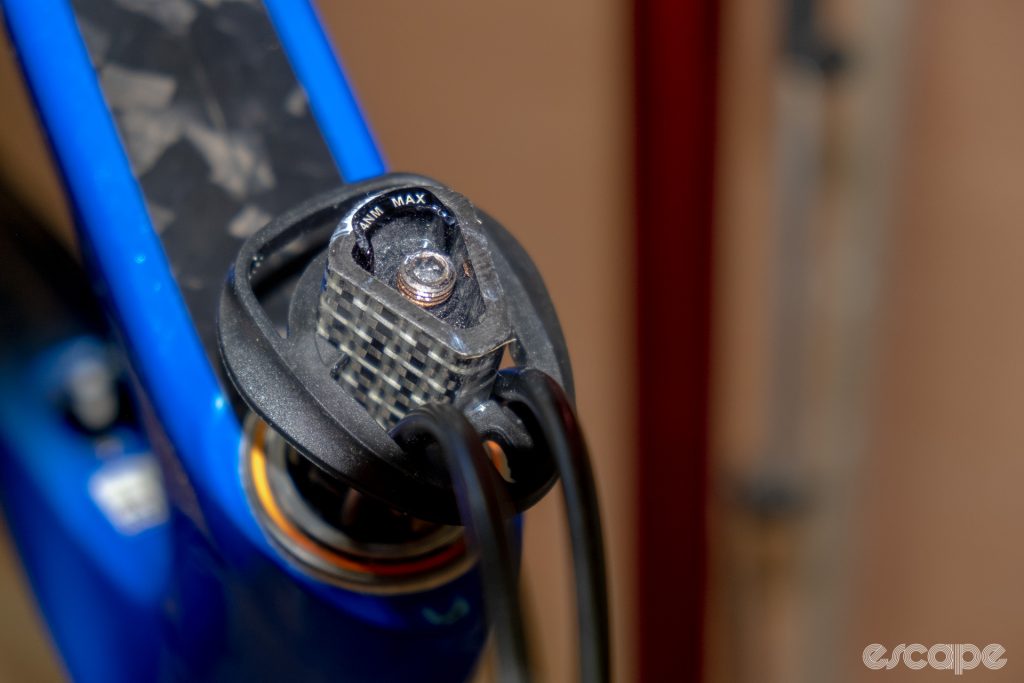
To accommodate that narrower head tube, Cannondale has developed an almost triangular-shaped fork steerer its calling the “delta steerer.” This most-non-round of non-round fork steerers opens up space for the hoses to route inside the new narrower head tube. Better yet, it means Cannondale can ditch the old turn-limiters from the Gen 3 design. Smart! But, it sure sounds complicated, and, unsurprisingly, the new design was met with plenty of scepticism when it was announced earlier this year.
Despite its unique shape, the delta steerer is compatible with standard round stems. However, regardless of the exact stem used, the Delta steerer is supplied with wedges that must be installed between the steerer and the stem, effectively creating a round steerer in the stem clamp zone. The Hi-Mod 2 I am reviewing is delivered with Cannondale’s own Conceal stem (214 grams, weighed), which offers both fully internal routing through the stem and hidden cable routing under the stem.
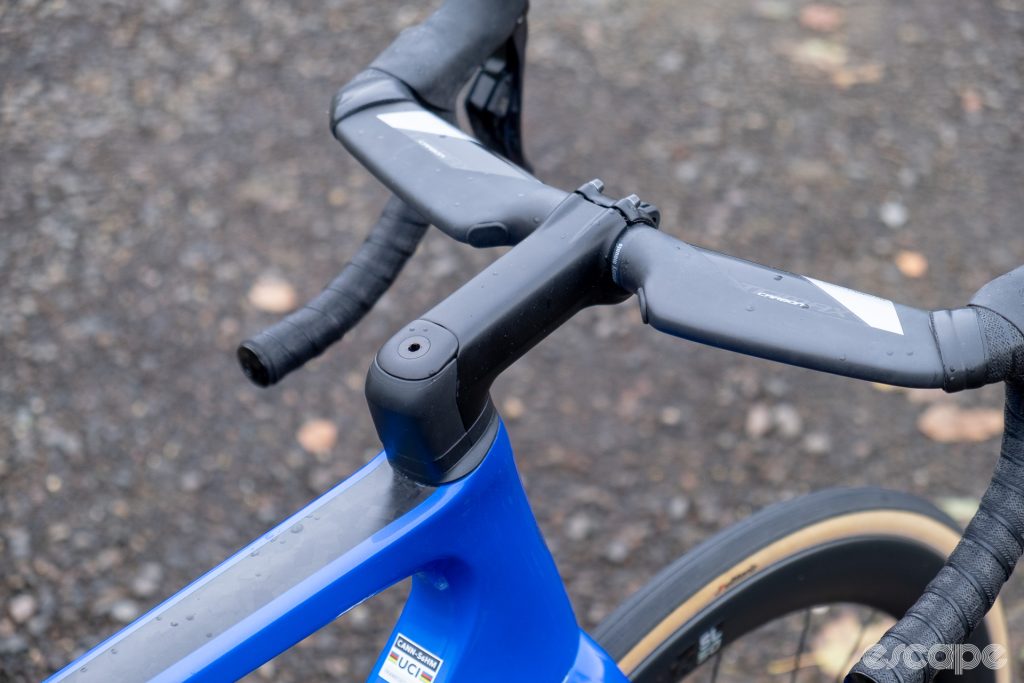
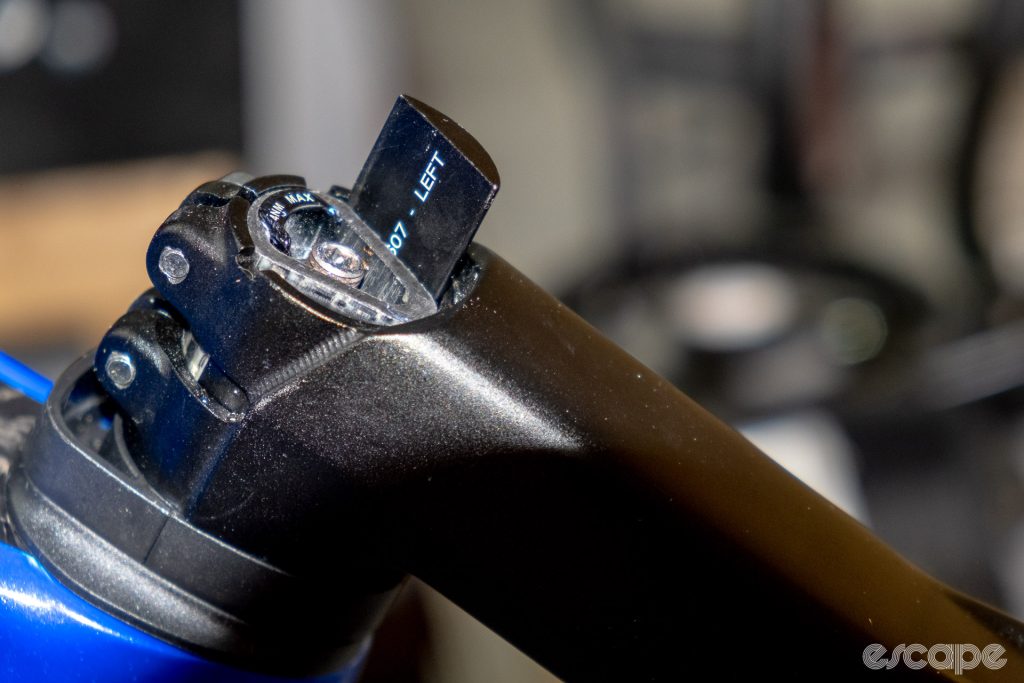
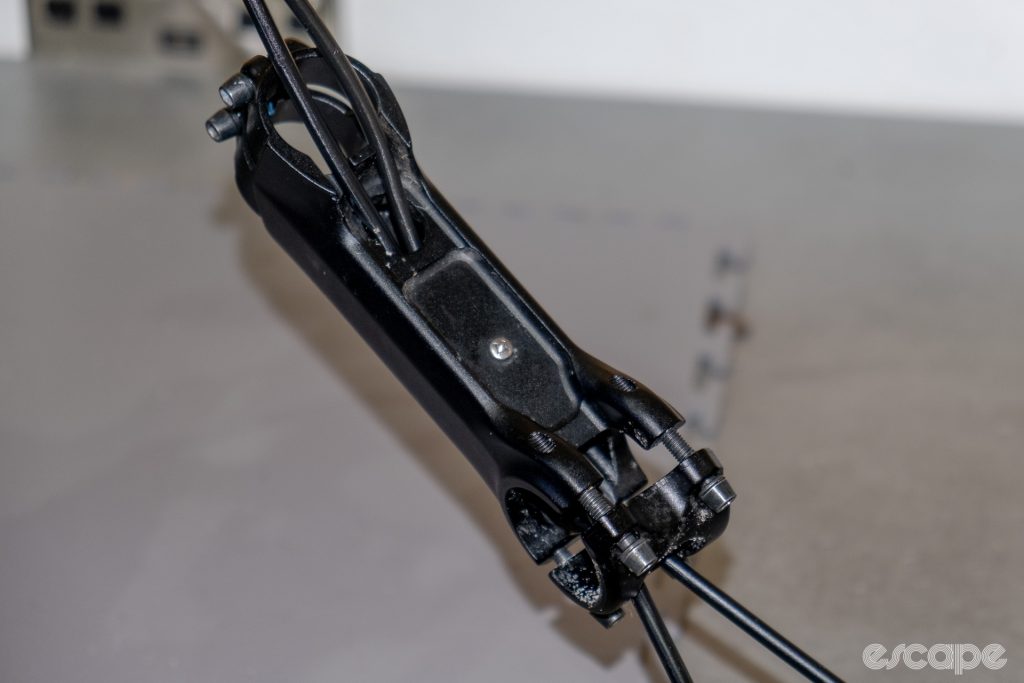
The Conceal stem is a neat solution offering either hose management routing option, but it’s not the lightest, and Cannondale could have done more to seal the stem-to-spacer interface. As it is, it seems like an invitation for water, grit, and road spray to work its way into the headset bearings. I’ll cover what the Delta Steerer is like to ride and live with later in this review.
Back to the frame, and that head tube isn’t just narrower, but it’s also slightly deeper for an overall improved aero profile. The same is true of the forks (444 grams, cut, including bung and weighed), which have not only ditched the crown to down tube lip of the Gen 3– smoothing out the transition from fork to frame – but also feature more pronounced shoulders on the crown and deeper, more aero-profiled legs, not to mention BMC-esque hidden dropouts. All the told, the new fork looks altogether more aero, meaner, more aggressive, and just racier in general.
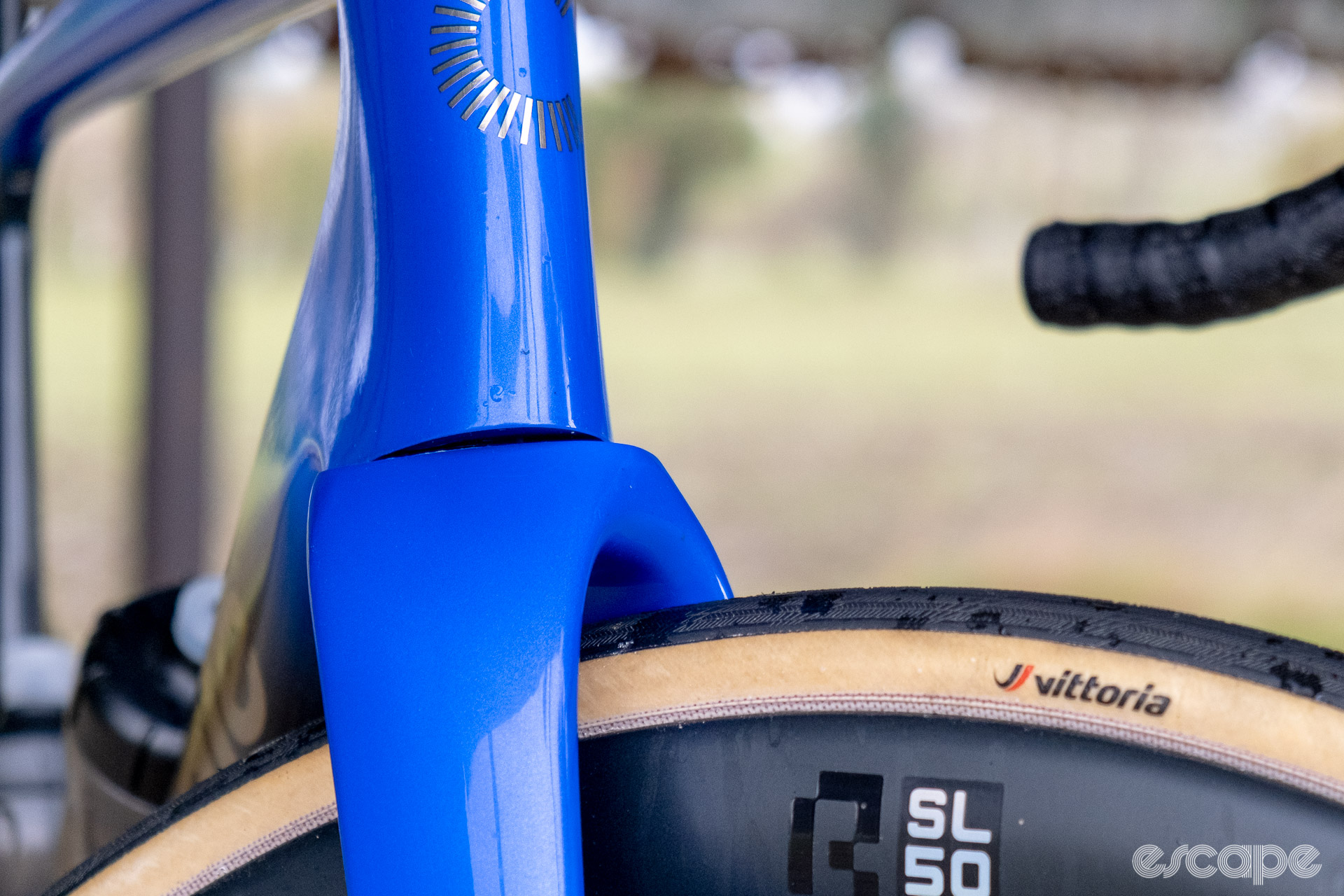
Aesthetically the new Evo strikes me as a bike of two halves. All that front-end aggressive and aero-gain-harnessing design tapers to a low profile and lightweight rear. The down tube is deeper and more aero-profiled throughout than the outgoing Evo 3, and the top tube tapers very lightly through its length towards the seat tube.
Speaking of the seat tube, nowhere is the Evo’s aero-to-lightweight contrast more obvious than on the new, deeper, more-profiled upper half of the seat tube which tapers to near-nothingness below the seatstay interface. The upper portion of the new Evo seat tube and seatpost both adopt the “narrow is faster” approach Cannondale applied to the head tube, and many brands are now applying to seat tube design. That narrowness is complimented by deep aero profiling and a truncated rear to minimise drag in every way possible.
It’s a concept that makes sense, as narrowing the width of the seat tube is thought to provide an aerodynamic gain (although seat tube aero seems as contentious as leg warmers over/under). Meanwhile, simply having less seat tube, and as such, less material, should translate into some lightweight gains.
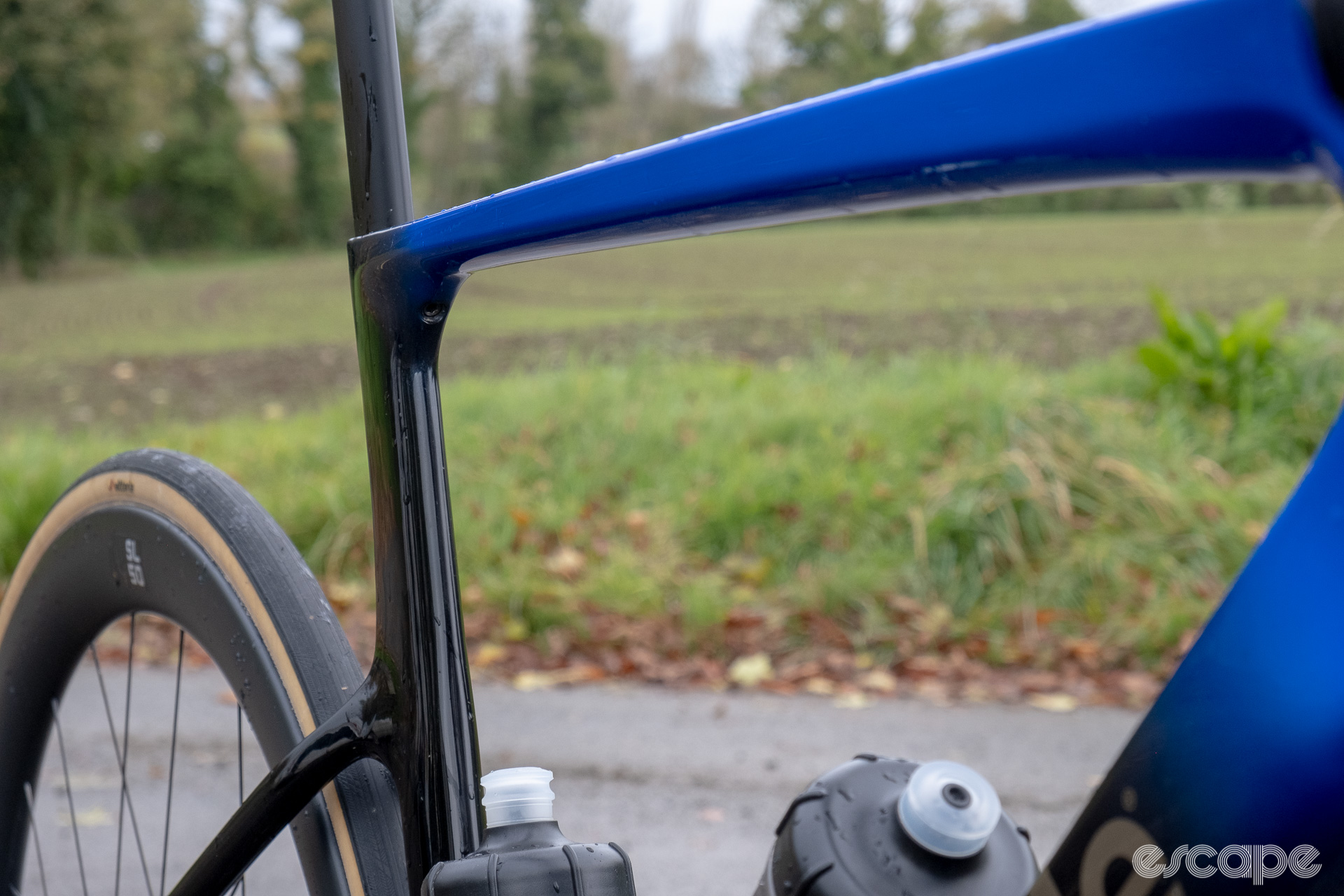
The new seat tube is so thin Cannondale has had to build a Di2 battery compartment into the underside of the bottom bracket shell / down tube. Even the relatively thin Di2 battery won’t squeeze into its more traditional home inside the seatpost. The battery relocation is a knock-on effect of the thinner seat tube aero gains, but it also ticks my F1 nerd boxes, potentially lowering the centre of gravity some tiny amount. In reality, that won’t make a single bit of difference on a bicycle.
As on trend as the “narrower is faster” seat tube concept is, Cannondale is also bucking trends with the lower portion of the seat tube. In contrast to the top portion above the seat stays, Cannondale’s designers have not only eschewed all aero profiling on the lower portion of the seat tube, but they have actually done the exact opposite with a wide (left to right), thin (front to rear) tube with zero profiling or air flow smoothing tail.
Where other designs see the seat tube hug the rear wheel and, increasingly so, merge with the bottom bracket, greatly increasing the surface area, targetting improved stiffness and increased aero efficiency, the new Evo 4 switches tack entirely, tapering down to almost nothing just where it meets the bottom bracket shell.
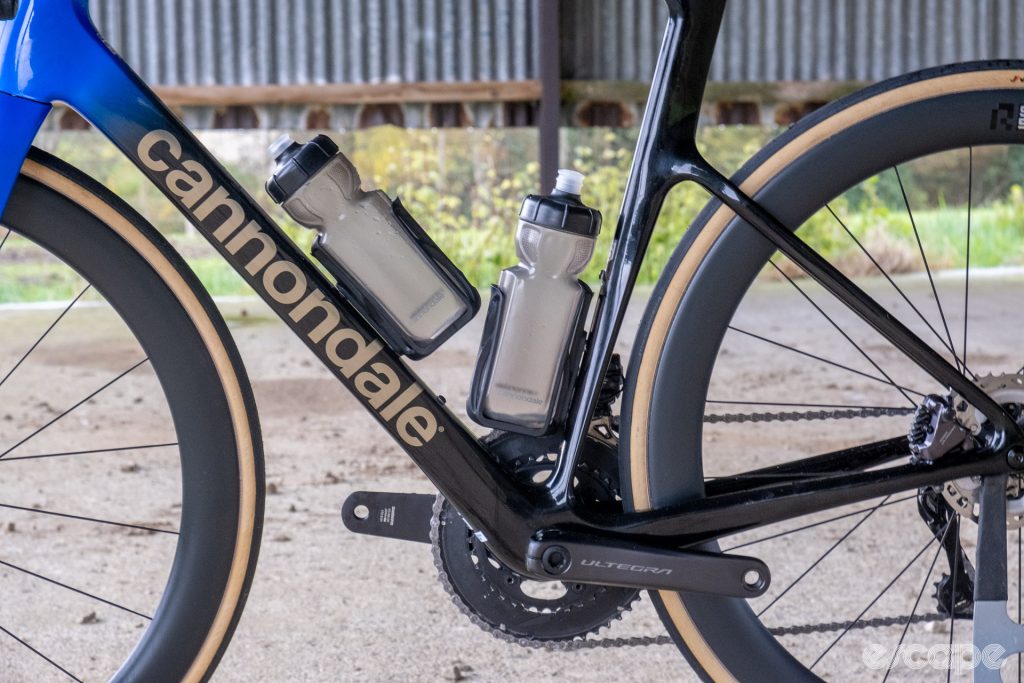
While it’s impossible to tell if there is an aero penalty or how much to the tapering section of the seat tube, Cannondale’s take should improve rear-end compliance in one of the lower aero impact areas. Ultimately, “aero-lite” bikes are about balancing compromises. The new Evo’s seatpost demonstrates that balance: Aero up top with lightweight and compliance down low.
Inside the bottom bracket shell is a threaded bottom bracket, another somewhat hidden but almost monumental update to the new SuperSix Evo frame. Cannondale might have kick-started the press-fit bottom bracket revolution and led the way on proprietary parts with its HollowGram cranksets, but public sentiment seems to have overthrown engineering ingenuity with the inclusion of a threaded bottom bracket and groupset matching cranksets on all the new bikes.
Sticking with the rear end, the new seatstays now meet the seat tube slightly lower down and with a slightly more aero-profiled interface. The chainstays are slightly taller at the bottom bracket, presumably chasing some stiffness gains and covering for any losses from the new seat tube design, but also taper more towards the rear drop-out than the outgoing Gen 3 Evo.
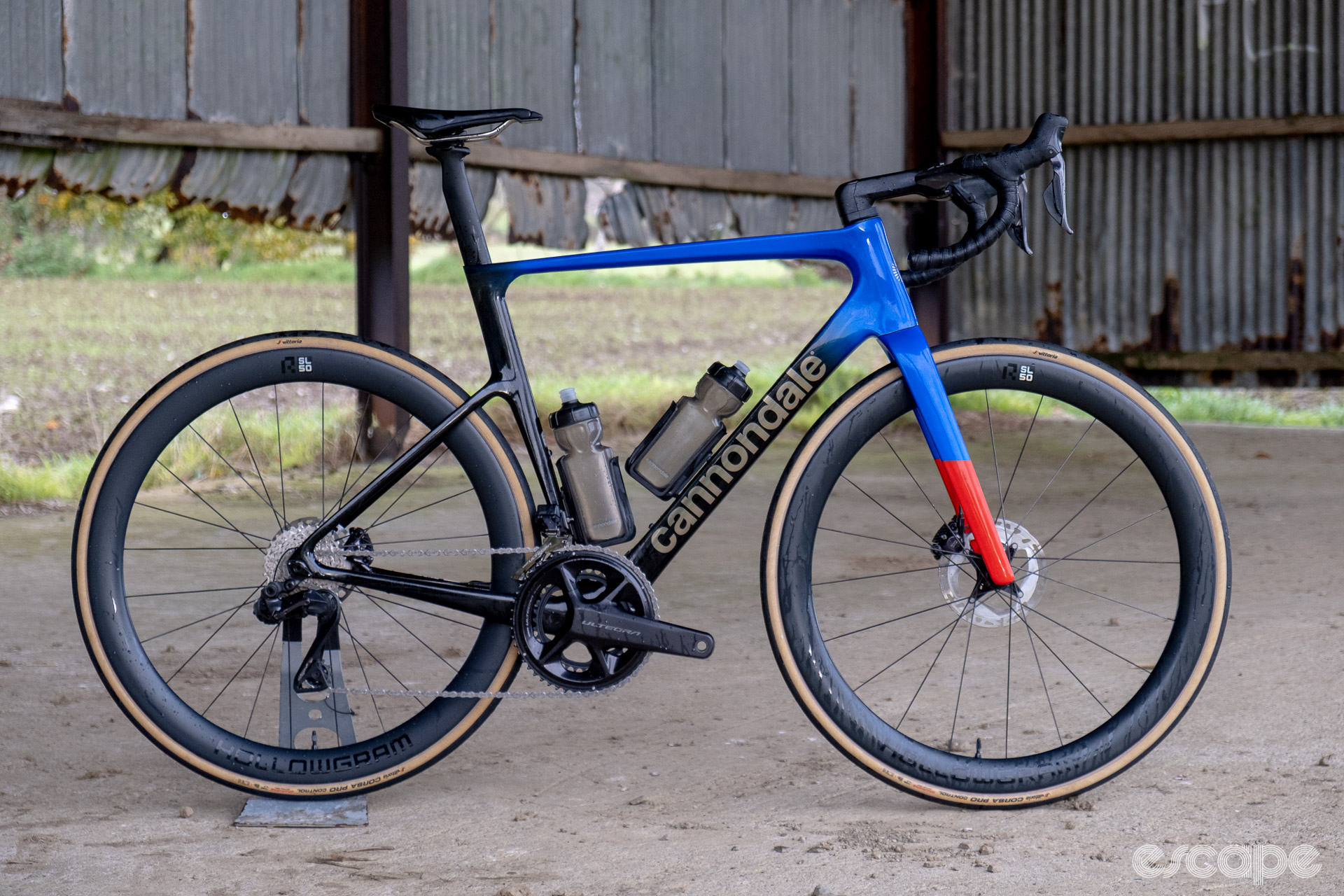
All the small things
Those more obvious updates aside, the new Supersix Evo features a raft of other minor updates conveying Cannondale’s clear attention to detail. Tyre clearance is officially set at 30 mm, but with 6 mm of clearance all around. I had zero issues testing 32 mm tyres. Unfortunately, the next size up that I had at hand was a 40 mm gravel tyre, which simply does not fit in the Evo. I get the impression anything up to a 35 could be fine.
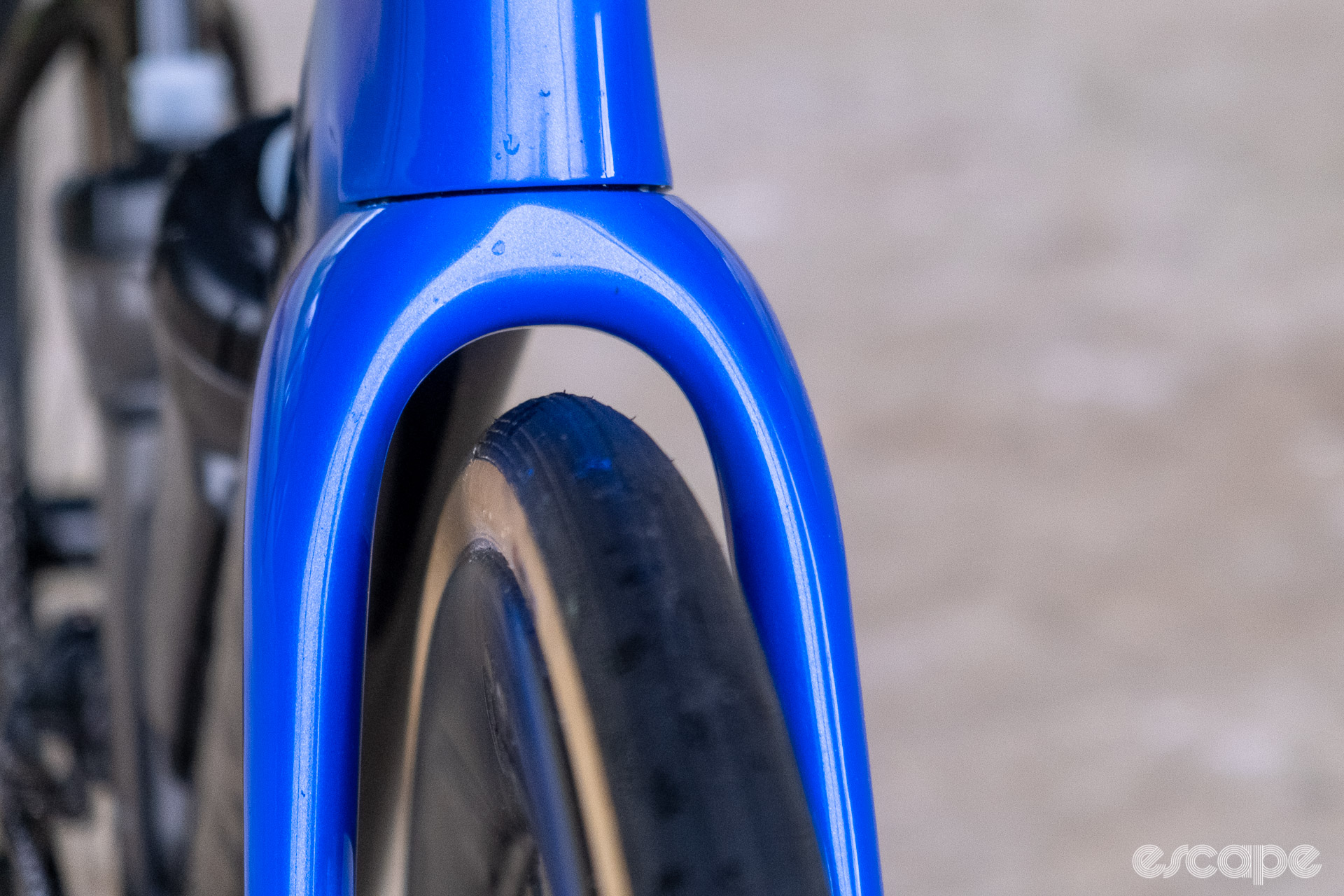
There’s also the inclusion of the ReGrip aero bottle cages (96 grams per pair) and Gripper Aero bottles, which on the face of it seem gimmicky but also make perfect sense. The bottles may not be the most aesthetically pleasing option you’ll ever see, but they do line up with the SuperSix down tube almost perfectly, and it’s clear to see how they might be faster.
At the risk of pre-empting my own findings later in this review, I feel it’s worth giving my opinion on the bottles right here. Simply put, they are a little awkward but work fine with a little care. I raced and trained on the SuperSix quite a bit over the past seven months, and I only ever dropped one bottle in all that time. That one bottle was the very first drink I took, in the very first race I did with the new Evo. After that, and with slightly more care than a round bidon would require, I didn’t actually drop or experience any ejecting bottles in all the time since, but there were a few close calls. They do require more attention both lifting and replacing and as such are kind of annoying at times.


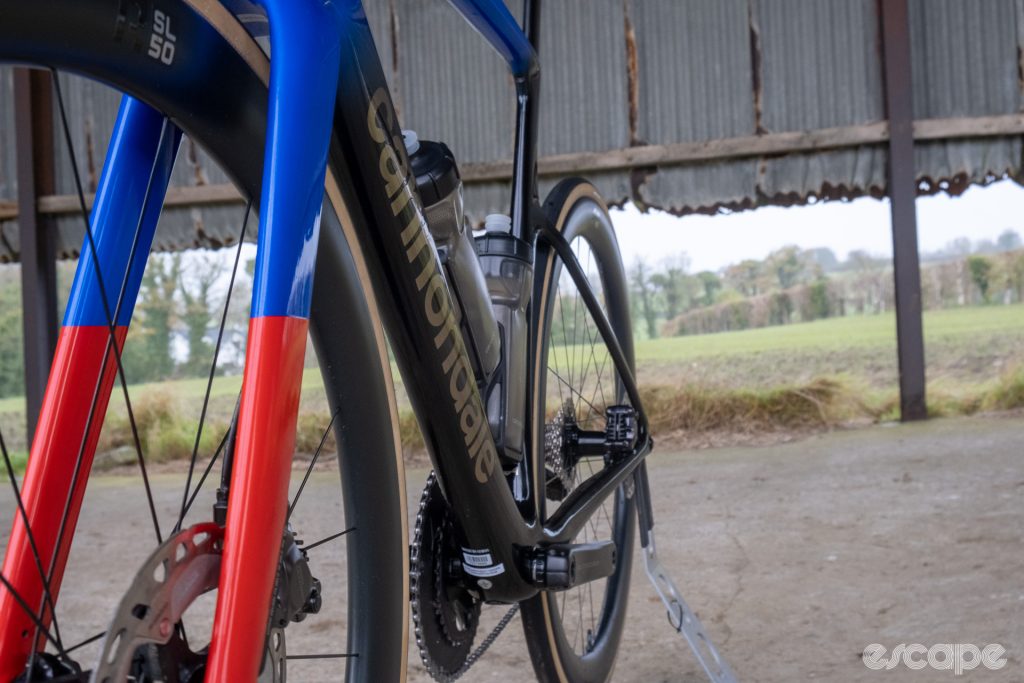
Despite my reservations, I definitely want these bottles on any aero bike I’m racing in future. They seemingly offer some aero gain over round bottles, but crucially, the cages also work with standard round bottles, making them actually practical for daily and racing use. That said, if the question is whether I would recommend them to non-competitive or non-racing riders, the answer is no. (PS: I found the dropped bottle after the race, but it had been smooshed by a vehicle. Cannondale kindly provided a few extras.)
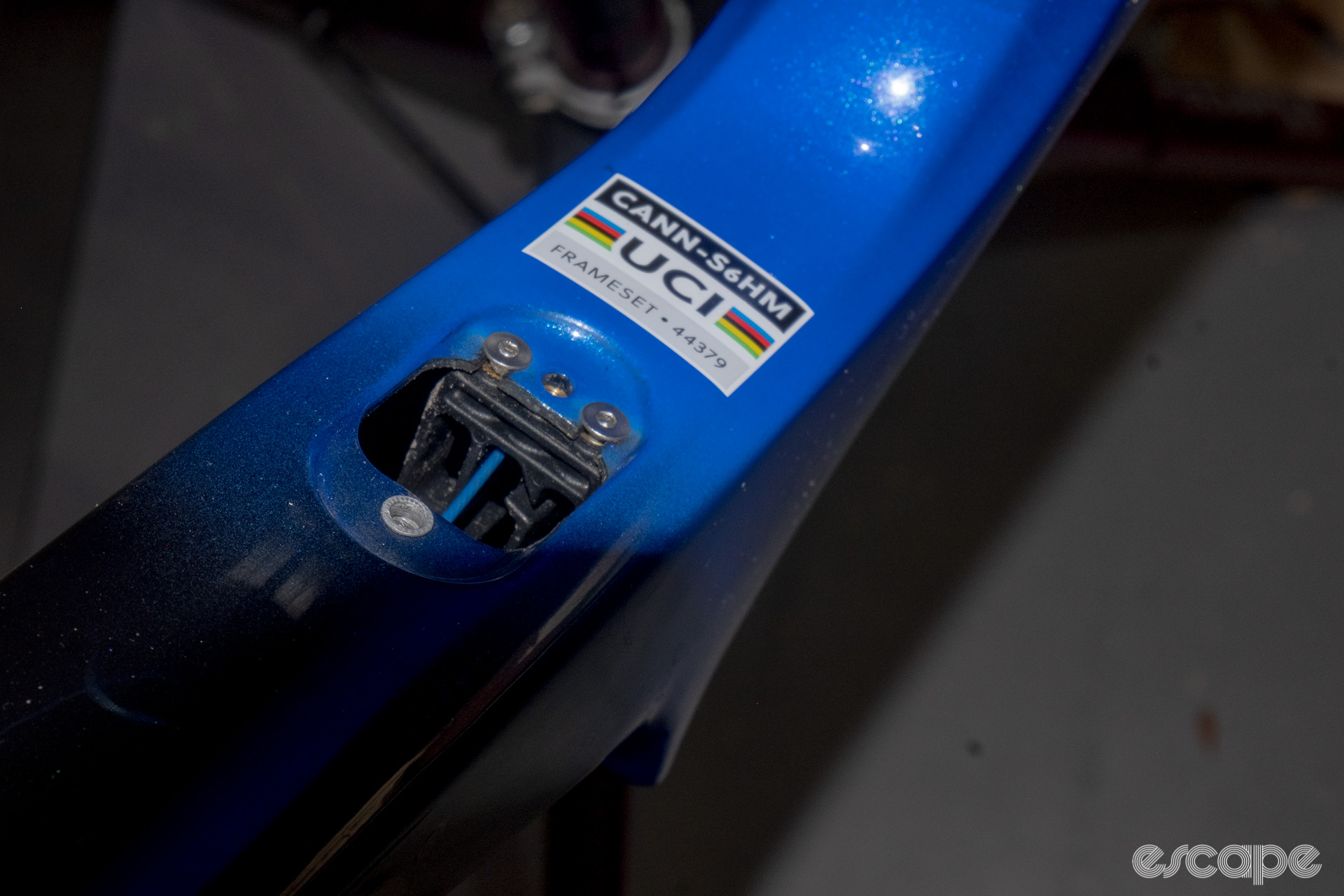
There are also nice little touches like a brake hose guide inside the down tube to reduce hose rattle. Kudos also to the high and low bottle mounting positions on both the down and seat tubes. It’s a ‘one or the other’ kind of scenario with the lowest of these settings as there isn’t actually room to run two bottle cages in the lower position on both tubes, but the versatility and slight aero gain of optimising location is nice, not to mention the ease of reach for those less concerned about every gram of aero drag.
I’d have liked to have seen Cannondale make the front derailleur mount removable, and, since I am nit-picking, I’m less than enamoured with the sheer number of holes, grommets, plugs, and rubber covers that litter the frame. It’s admirable that Cannondale has retained mechanical shifting compatibility, and such compatibility requires cable exit ports. But the black holes that are the Di2 junction box port and Cannondale’s own SmartSense light and radar battery mounting port, both on the down tube, stand out like a sore thumb on anything other than a black paint job. Add in the additional bottle cage mounts and cable ports (again, both good things in isolation), and there’s a sea of mismatched rubber bits and bobs throughout the frame.
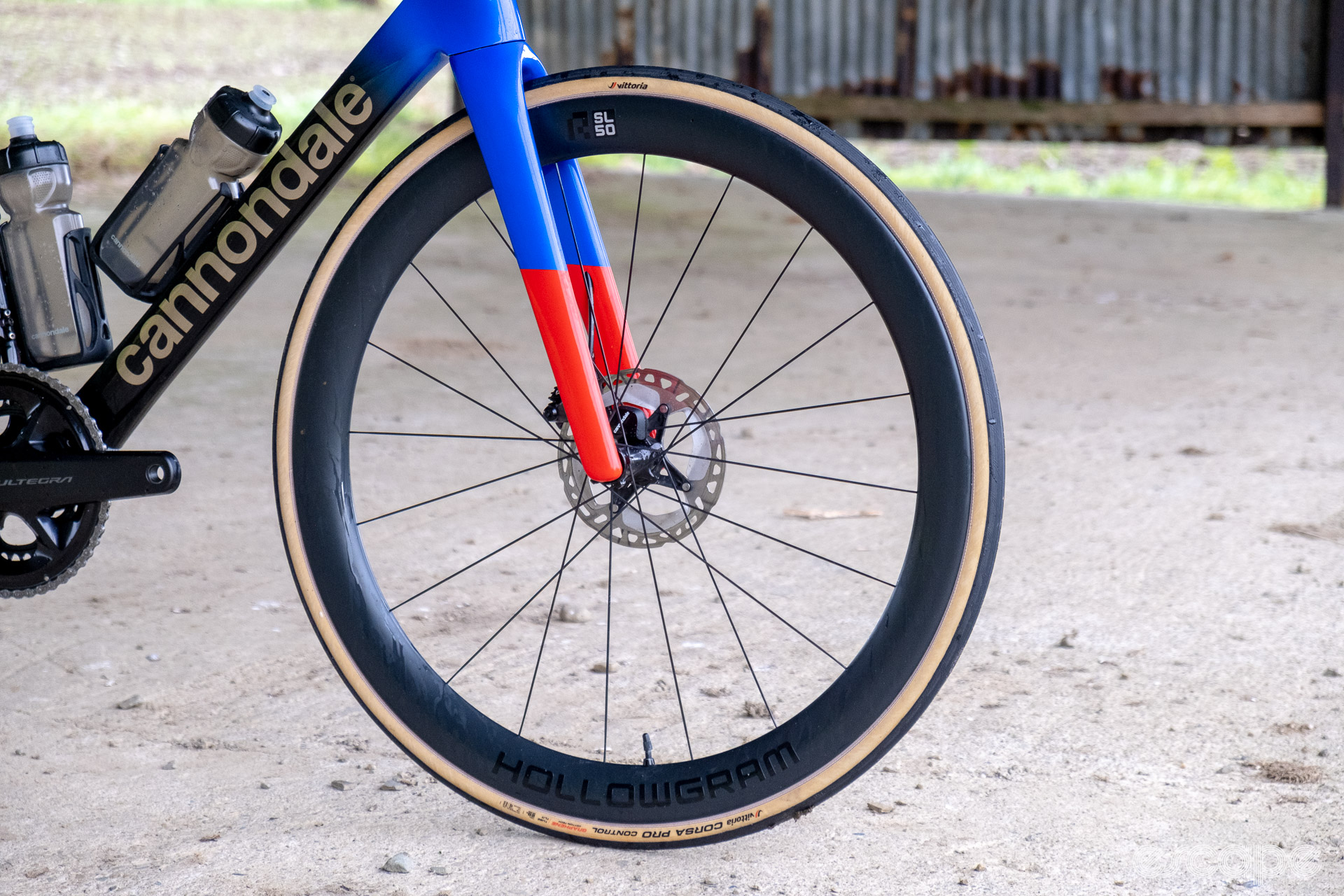
Cannondale developed new wheels for the updated range of SuperSixes. The Hi-Mod 2 I was riding comes equipped with the HollowGram R-SL 50 carbon-rimmed wheelset featuring a, you guessed it, 50 mm deep rim. With a claimed weight of 1,520 grams (our review set weighed 1,613 grams with rim tape, no valves, and the 12-gram speed sensor removed), you won’t find the wheelset atop any hillclimber’s wish list, but with a 21 mm internal rim width, 32 mm external, hidden nipples, and DT’s AeroLite profiled spokes, they do feature progressive modern road rim profiles.
Add in the DT-Swiss 240 EXP rear hub internals, generally cushy ride feel, plus good crosswind stability, and you have the making of a stock wheelset ticking many of the boxes other house brand offerings do not. Yes, I know, hidden nipples are a pain, but there is probably some marginal aero-gain.
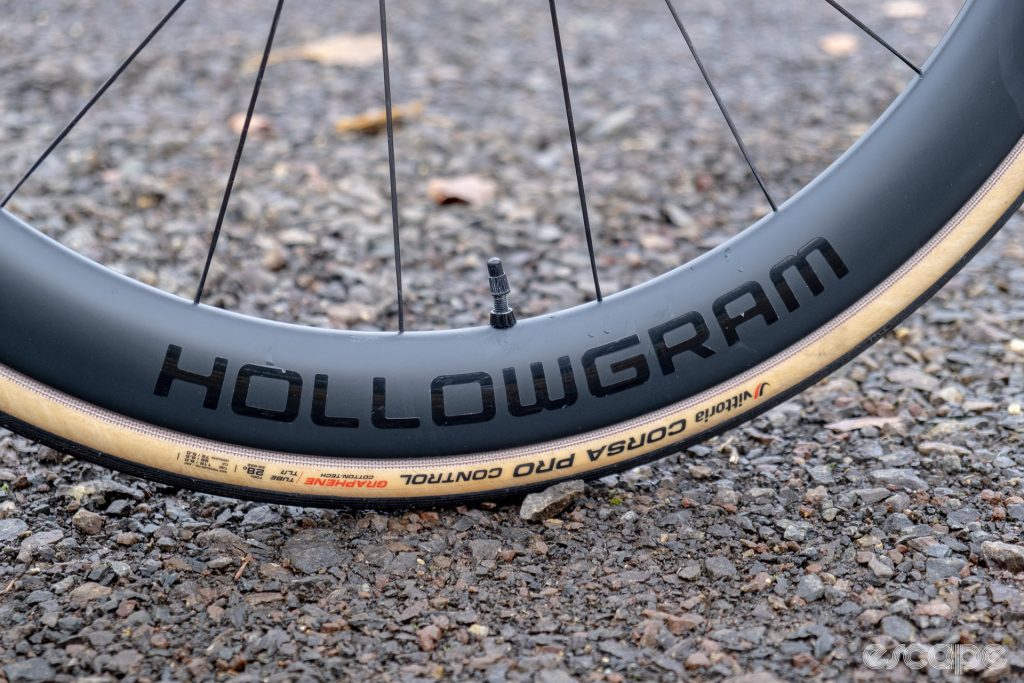
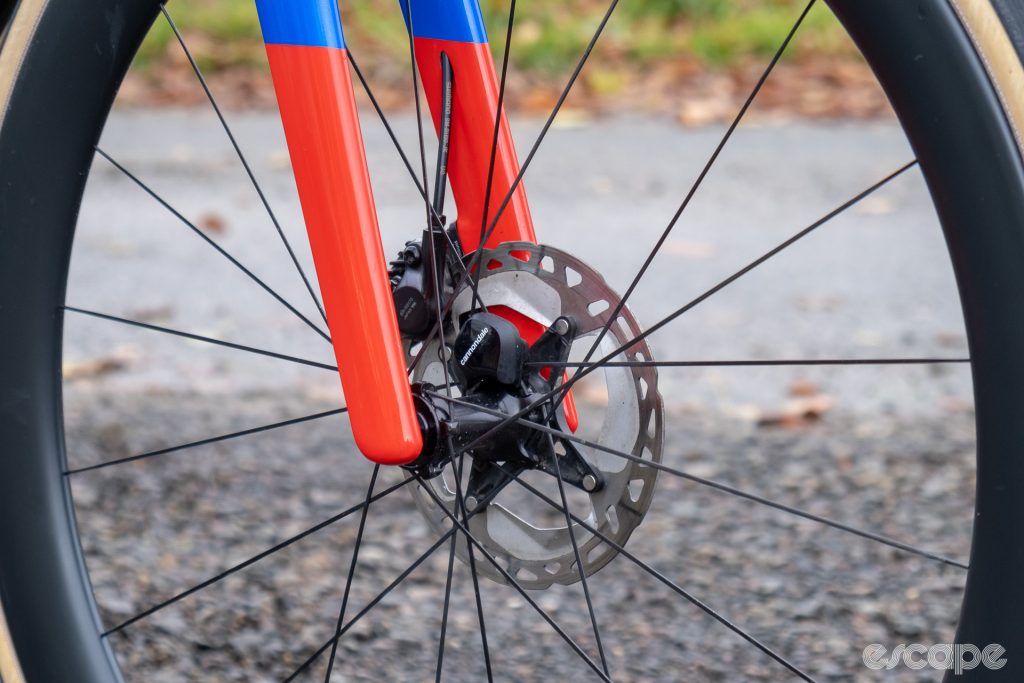
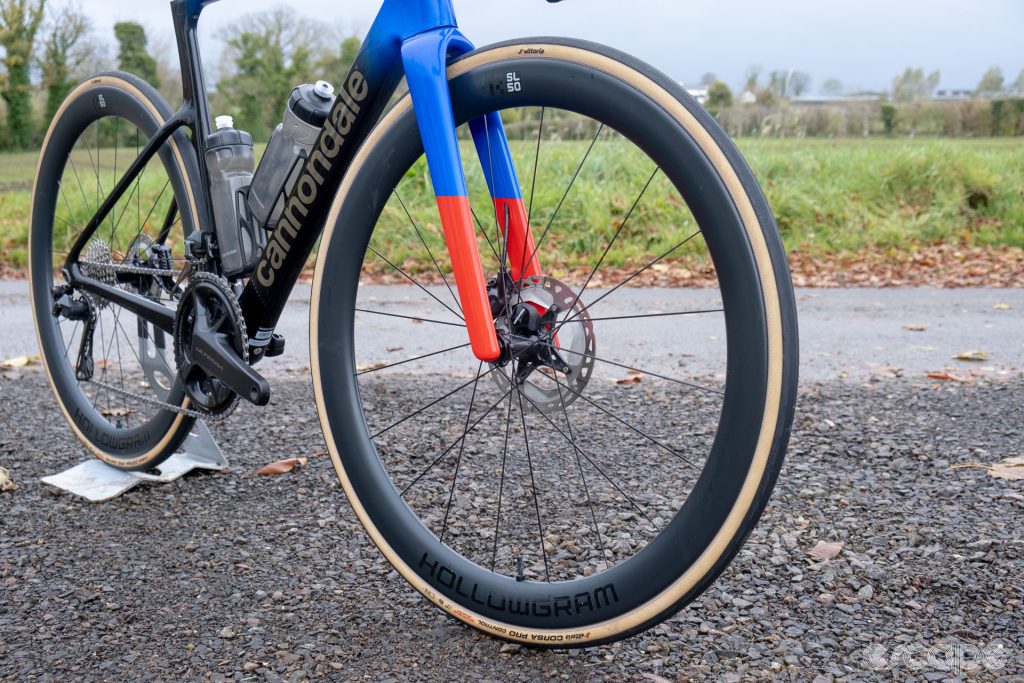
Somewhat confusingly, for me, the wheelset is supplied with 25 mm tyres, which seems at odds with the seemingly 28 mm-tyre-optimised rim. Nevertheless, swapping out the 25s for a set of 28s, the HollowGrams do not disappoint on the road. They are certainly not the stiffest wheels, and contribute to the Evo’s overall sense of reduced stiffness. We are not talking about disc brake rub levels of flex, but the wheels are the main contributing factor in the bike’s cushier and less-snappy ride sensation (but more on the ride feel in a moment).
I did feel significant stiffness upgrades and an improved sense of urgency about the whole bike after swapping the wheels out for other hoops hanging in the garage. That said, they do offer plenty of straight-line speed and feel like they’d test well in a wind tunnel.
In summary, I probably wouldn’t spec them on a frame-only custom-built Evo, but complete bike buyers won’t find themselves needing an immediate wheelset upgrade. Finally, and disappointingly, I did experience some water ingress and retention with the R-SLs also, despite only relatively few kilometres in the wet.
Sticking with the wheel area, Cannondale supplies the new Evo with a 6 mm-head thru-axle up front and a 5 mm at the rear. Why the difference? I don’t know. But it is kind of annoying. There’s also a removable speed sensor included.
Geometry and ride feel

For all the hidden and visible updates to the new frame, Cannondale has mostly stuck with the same geometry from the outgoing bike.
Bar a millimetre or two here and there, the decision to amalgamate the 60 and 62 cm frames into one 61 cm offering is the one big exception to that geometry continuity, and I can’t think of many positives to the end user in this decision. It simply means size-60 cm riders need to size up or down, while size-62 cm riders will need to size down. Inevitably, the new size may work for some riders, but it’s less choice for many tall riders who may find options are already limited in this size range.
That’s not a problem I face, though, and Cannondale supplied a size 56 cm, with geometry practically unchanged from its predecessor. With 389 mm of reach, it’s where you’d expect a modern 56 cm or large road racing frame to sit. The 575 mm of stack is perhaps higher than the average for this size and category, but it is in keeping with Cannondale’s take on the previous Evo and the result is a front end much more accessible to all.
Admittedly, that added front-end height may prove problematic for the most aggressive of front-end slams, but trends suggest that position may not be as popular as it once was as pros, bike fitters, and amateurs alike cotton on to the gains on offer from a more manageable position. Not to mention the benefits in potentially staving off the increasingly common iliac artery syndrome.
So far pretty normal, but it is in the steering geometry that the SuperSixs differ from the competition. With a 73° head angle it is slightly slacker than many in this category and the same is almost true of the 73.3° seat tube angle. There’s nothing major in those angles, but just the most immediately obvious signs of a generally slacker trend. Then there is the fork rake, which, at 45 mm, is a few mm greater than many other bikes I’ve ridden in this category. This rake and the slightly slacker head tube combine for a fairly balanced 58 mm trail. Meanwhile, the front centre at 594 mm and a wheelbase at 994 mm are longer than most 56 cm / size large bikes I’ve ridden in this category.

Long story short, Cannondale makes the SuperSix Evo longer, especially at the front, without compromising fit position. As for what that means on the road? I found the Evo was brilliantly composed regardless of the terrain or riding style. I first noticed it on descents, where I was frequently surprised by a speed reading on my head unit much greater than my perception of how fast I was going. That plus a confidence-inspiring “rideability” through corners, especially with rough surfaces, better than most performance bikes.
It’s on descents that the new Evo proved to me that it more than lives up to its older siblings’ hype. It’s as fast as you like but doesn’t feel the need to flaunt it with garish design elements or bare-knuckle-ride sensations. While carbon layups and all manner of other interventions contribute to a great ride, geometry choices could make or break any bike.
It’s this longer wheelbase, especially from the longer front end, plus the rear compliance that I feel contribute to the Evo’s superbly composed ride, especially as many riders adopt modern, more-forward positions. Move forward on a shorter, more aggressive front end, and inevitably, the overall balance takes a hit. I had various saddles slammed all the way forward (one consequence of that slightly slacker seat tube angle) on the Evo and never felt the handling suffered as a result.
Now, as I’ve said before, there are pros and cons to every geometry choice. All that composure means something has to give elsewhere, and that, for me, is in the sensation of agility, snappy reactions, and the general sensation of acceleration. The Evo is quick – it is all these things I’ve just listed – but just as lower tyre pressures might feel slower even if they test faster, the Evo is very much the same.
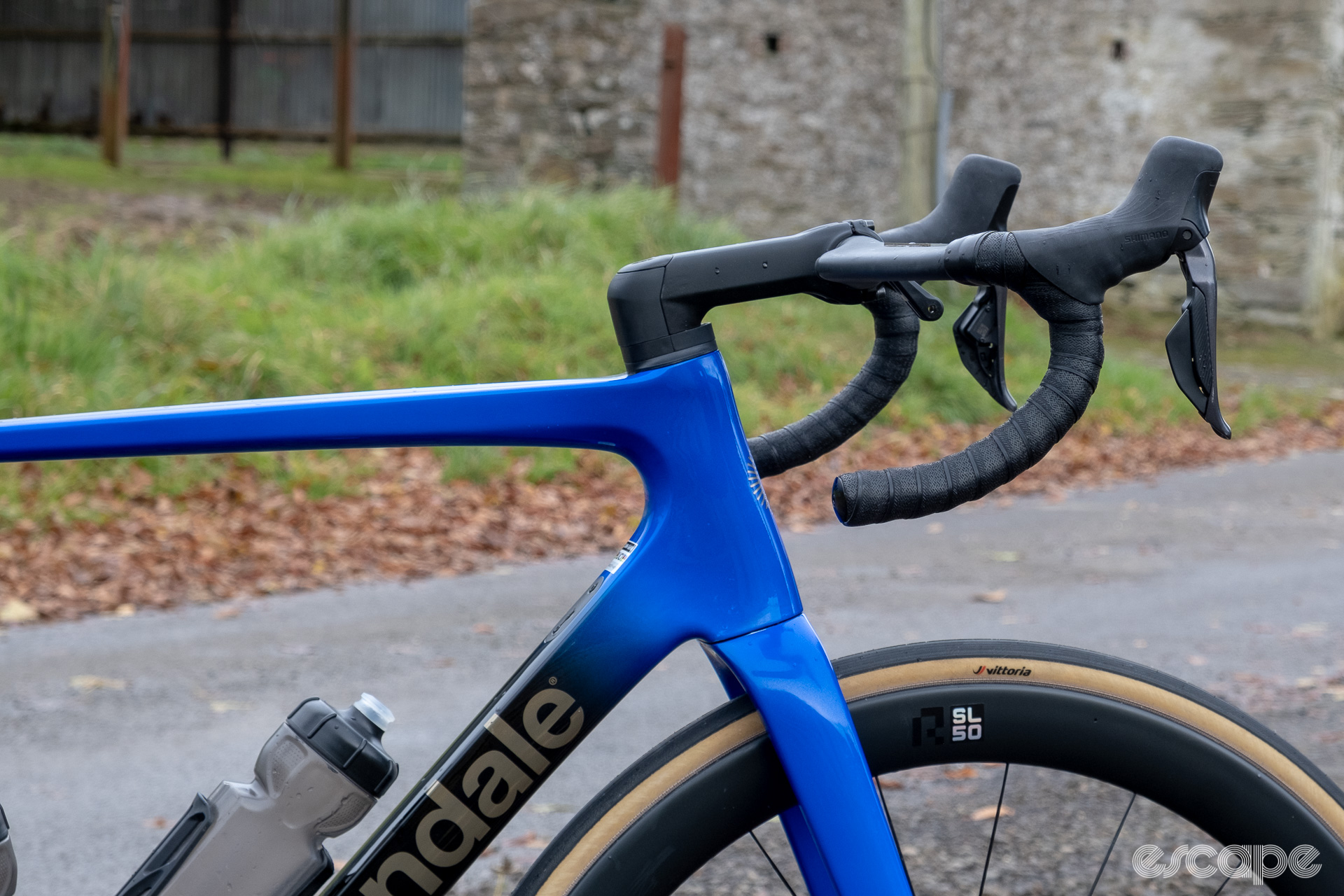
Hopping out of the saddle and laying down the power never feels electric, but, to be fair, it is undeniably effective. I do feel the front end falls a little short in overall stiffness and contributes to the less snappy sense of acceleration. Be that down to the delta steerer, the new, slimmer, aero-profiled head tube, or some combination of both, I feel with 10 mm of spacers below the stem, the flex relative to other performance bikes in this space is notable.
Relative is the key word here, and I’m not convinced reduced stiffness is a huge performance issue. For sure, additional front-end flex is not ideal for those with World Tour sprinting prowess, but I actually think it may be a positive aspect in some situations. Front-end stiffness is often cited as a positive for cornering, and the Evo is not so flexible that this is an issue, but I found the little extra flex it does feature actually helps cornering on rough surface finishes and actually gave me the confidence to attack bends.
All that said, the comparatively reduced stiffness definitely contributes to the absence of the zippy and lightweight sensation one gets from a stiffer front end. More obvious is the lack of stiffness in the R-SL wheelset. Again, as mentioned earlier, you’ll find a performance and stiffness bump in a stiffer wheelset. Whether you want that or not will depend on your riding style and aspirations for the Evo, as the new bike makes a fine argument that the end result is every bit as fast regardless of the outright stiffness.
One aspect I found particularly impressive was the Evo’s ability to retain traction/power transfer at the rear regardless of the surface quality or what I threw at it. A few times, I found myself ticking off mental notes of the Evo’s ability to keep the rear tyre planted and transferring power when I knew the power I was creating, the manner I was delivering it, and the surface I was riding on usually results in the rear wheel skipping with other bikes. This wasn’t huge, and of course keeping that rear wheel planted is as dependent, if not more so, on the rider’s technique as the frame, but the Evo’s ability did stand out to me. One can make their own calculations as to whether it is better to have a stiffer frame losing traction or a less-stiff frame retaining power transfer.
With that in mind, it was a little strange that the only place I felt the Evo’s balance was a little out of kilter was in the ride comfort delta (you knew that pun was coming), front to rear. The front, despite not being overly stiff, did ride pretty harshly and certainly gave me a feel for every inch of tarmac I traversed. The rear, on the other hand, was impressively smooth in comparison.

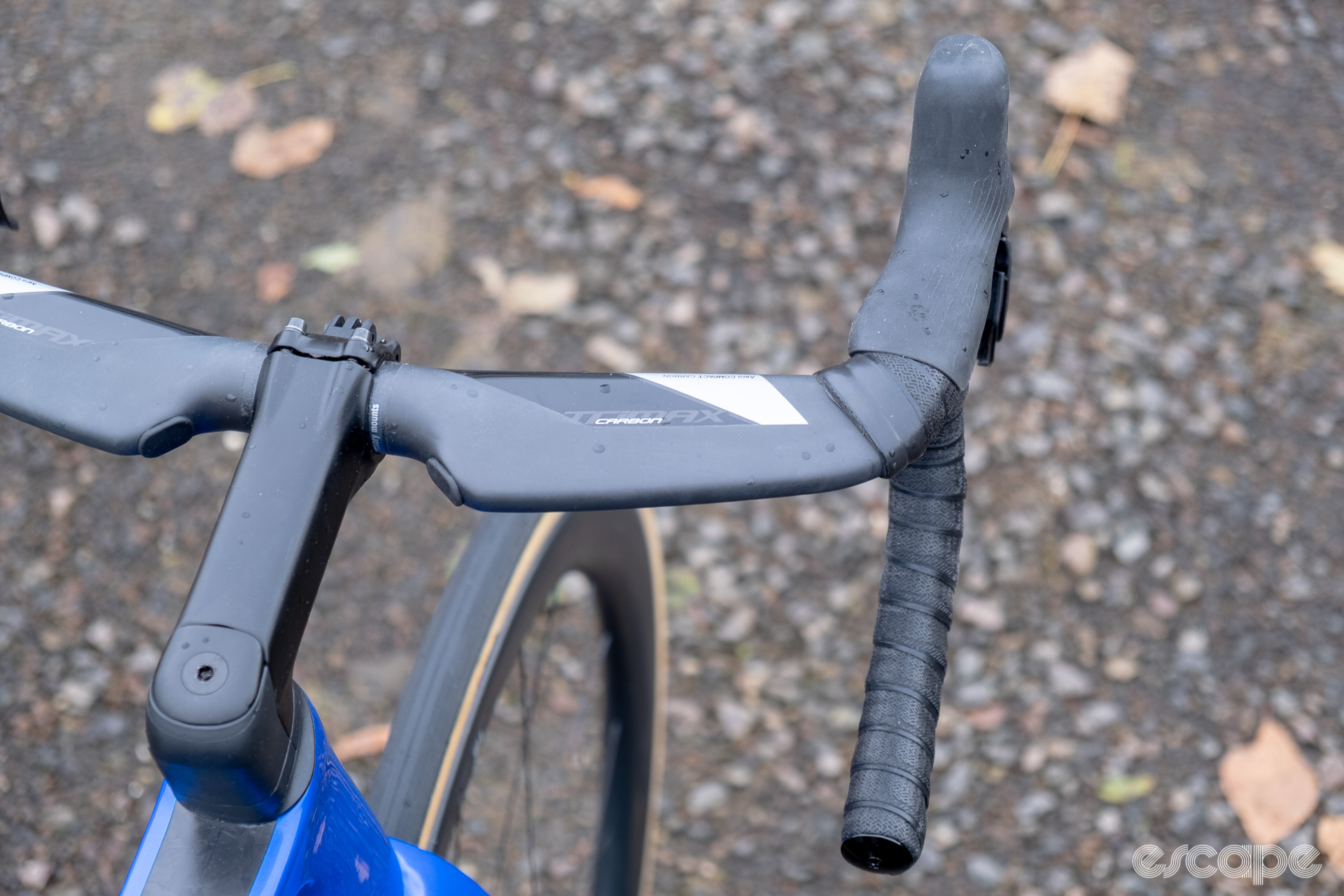
I feel the Vision Trimax aero bars (225 grams, weighed) contributed most significantly to that front-end harshness, not to mention having the worst tops I have ever laid hands-on. Perhaps it’s me, but I can’t think of a reason a forward swooping bend on the tops is a good idea. It throws my elbows out wide (the opposite of what you want from an aero position) while riding on the hoods and coupled with the sheer girth and slippery finish on the tops, it was impossible to find a comfortable and safe grip up top.
No doubt all that extra winged surface area provides a decent aero gain, but coupled with the increased depth and forward sweep, the comfort suffered greatly. They are stiff, though, and at least with the fully internal hose routing, I could hook my thumbs into the central cutouts.
It’s an entirely different, smoother story at the rear, though, and I can only attribute that to the compliance-inducing tapered seat tube and similar features built into the seatpost. To be fair, the dropped seatstays and tapered top tube likely also contribute. Whatever it is, Cannondale did good.
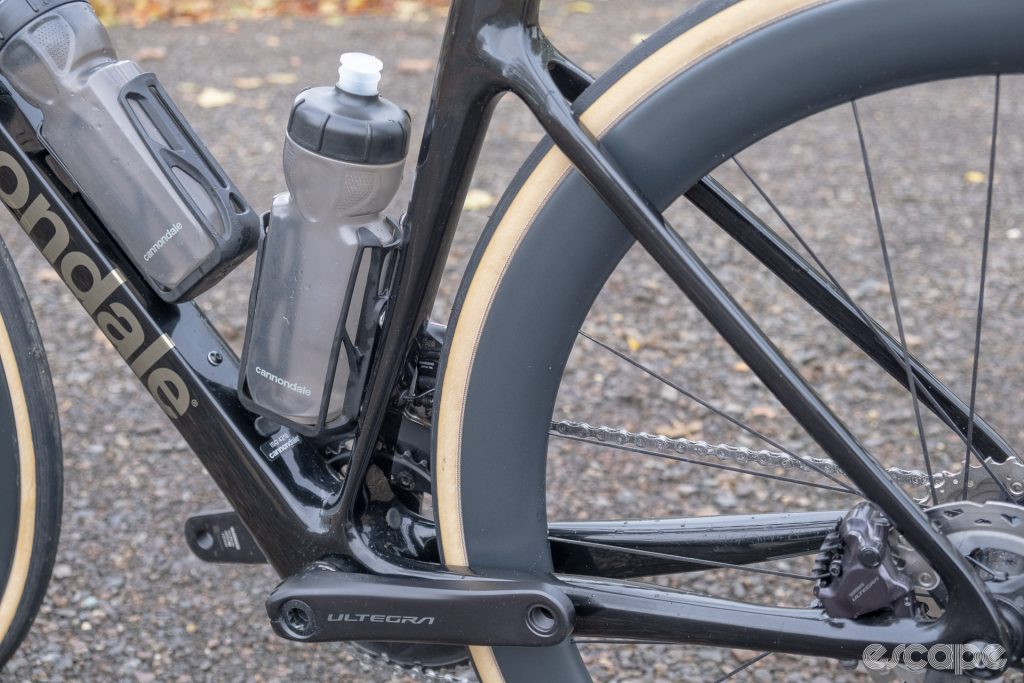
What’s it all mean?
According to Cannondale, the new Evo is nine watts faster than its predecessor at 45 km/h. It’s lighter and stiffer also. I’ve already dug into the stiffness in the section above, but as for weight, the Ultegra Di2-equipped bike Cannondale delivered to us for testing weighed in at 7.5 kg sans pedals with Continentals GP 5000 25 mm tyres.
Cannondale claims a size 56 cm Hi-Mod frame weighs 810 grams including paint and hardware. We stripped down (almost entirely) our review sample, which weighed in at 830 grams with two Di2 wires (I was not for rerouting those) and with the rubber grommets still attached. There is, though, plenty of weight-saving potential in the wheels (~1,600 grams), stem (214 grams), Prologo saddle (237 grams), and bottle cages (96 grams).
Living with the new Evo for the past seven months has been easy, a joy almost, and has included two rebuilds, a five-day stage race, and plenty of “test rides.” It was good out of the box, and it only improved with the addition of wider tyres and plusher wheels.
Honestly, I am pretty glad the Delta steerer arrived already cut to size, but it otherwise presented no issues throughout the test period. The steerer shape does require the use of two wedges, as mentioned earlier, between it and the stem clamp surface – no big issue there. The proprietary expansion bung is a bit of a pain to piece together if you’ve taken it apart. However, I had zero headset loosening issues throughout the test.
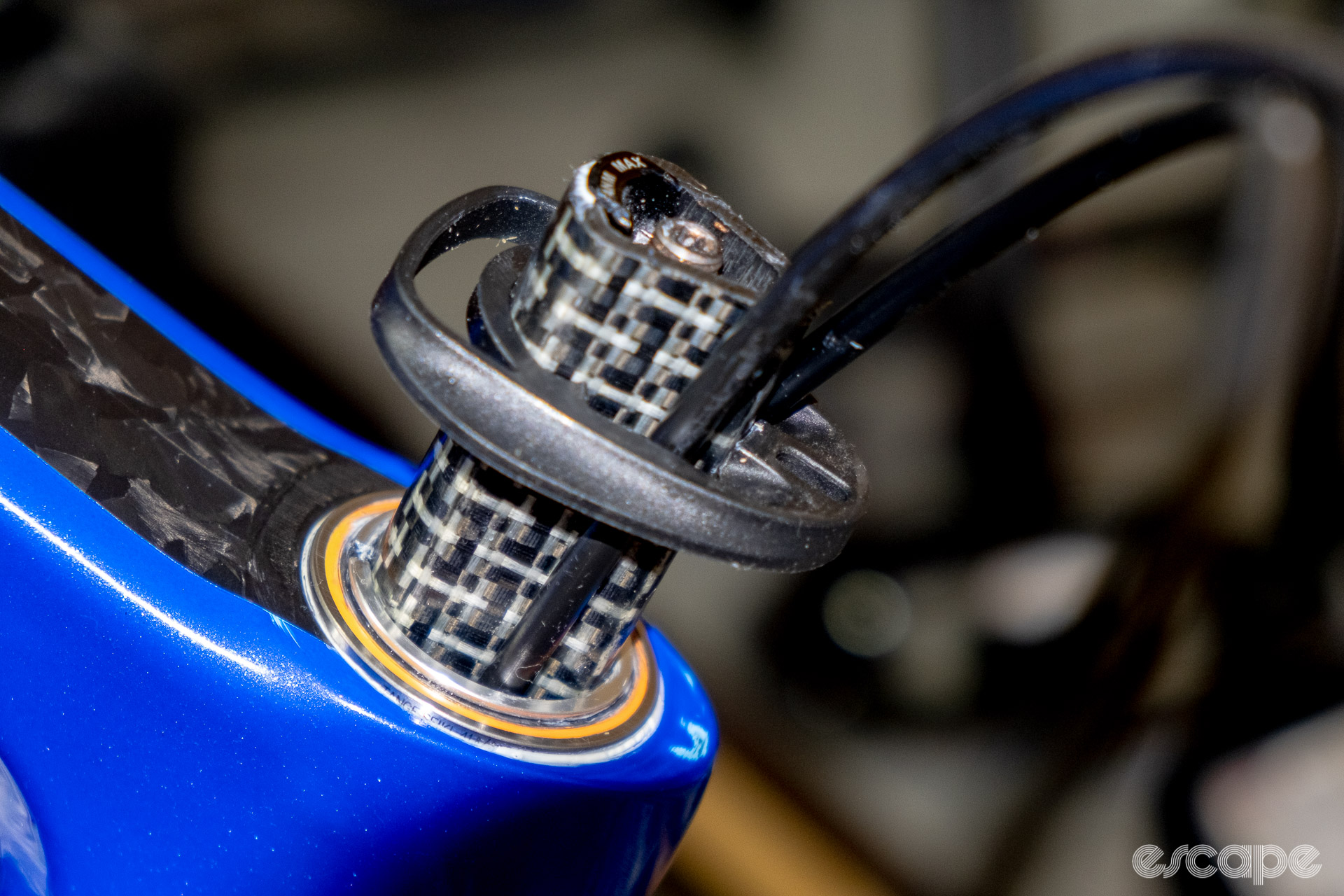
Cannondale had asked which bar width I’d prefer on the test bike, and so I was lucky to get a 40 cm narrow-ish setup. But the stock 42 cm aero bars Cannondale (and many other brands) has equipped on a modern race-intended bikes does not compute in my book with the other aero interventions. I know wide bars have their fans and those whom they just fit better, but given there is no one-size-fits-all option for handlebar width, I still feel manufacturers need to complement all the other compromises a modern race bike makes in achieving many of the gains they offer.
The same is also true of the seatpost. I asked, and Cannondale delivered a zero-offset post (160 grams, weighed including hardware), but a 56 cm bike is otherwise delivered with a 20 mm setback post. I’ll quit this rant before I get started again, as it is a topic we discussed at greater length in this week’s Geek Warning podcast.
In fact, that gets me to the only actual disappointment I have with the new Evo. Once again, as is so often the case with new bikes, it’s the price. Unfortunately, we are still living in a world where an Ultegra Di2 bike with house-brand wheels costs £8,250. Pricey as it is, what’s more frustrating is that as bikes get more expensive, options on stock-sizing components are practically non-existent. It’s only six years ago I was selling Ford Fiesta cars costing less than many bikes with genuine spec options. Fast forward to today, and despite rising bike prices (across most brands, not just Cannondale), we often get the stem, handlebar, crank length, seatpost set back, chainring combo and cassette size we are given.
Rising prices I can somewhat understand – bikes are getting better, while everything and every step of the manufacturing and sales process is getting more expensive due to inflation. But, do yourself a favour, Bike Industry, and offset those increasing prices with the choice to spec the component sizes as we like, easily and at no extra cost. (I thought I had quit this rant.)
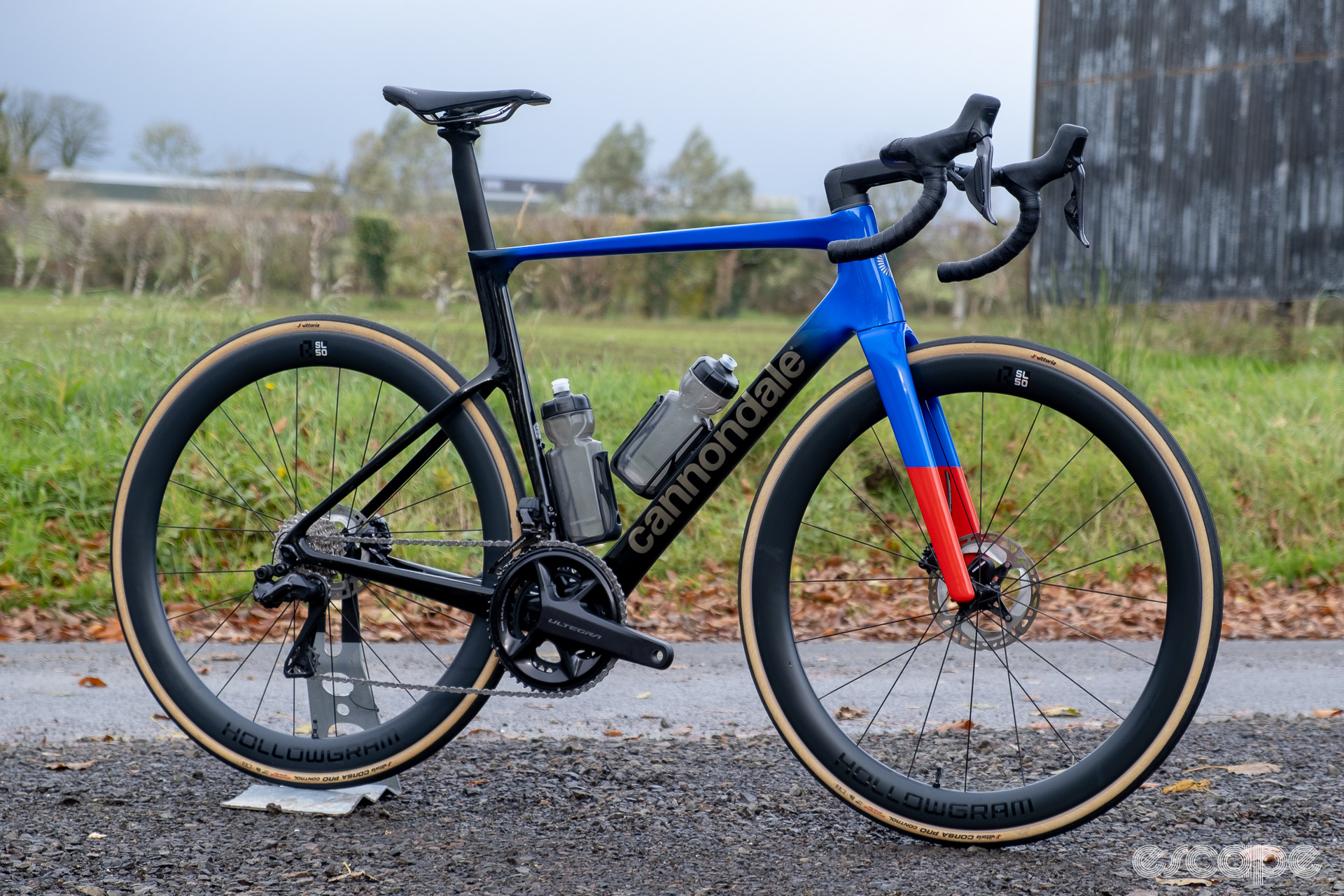
OK, rant actually over. All told, the new SuperSix lived up to its predecessor’s reputation and the new updates only cement its standing as a superb race bike option. I have the privileged position of getting to ride a considerable number of new bikes, but I can safely say few have captured the attention or remarks from other riders quite like the new SuperSix, from social media reactions to race HQ carpark chatter. Heck, even the police pulled me over on one ride because, as the officer informed me, “I need to get a look at this new Cannondale.” (I kid you not). I’ve been continually amazed by this bike’s widespread allure.
As each and every passer-by inevitably asked, “what’s it like?,” I found myself at first repeating some variation of “good solid bike, easy to live with, nothing mind-blowing, but great handling, harsh at the front, but plenty of adjustability with a two-piece bar and stem, a normal seat post, a threaded bottom bracket and, almost, no crazy proprietary parts.”
Taking the Evo racing, though, I realised I was doing the Evo a disservice. I wasn’t giving the Evo the performance praise it deserved. It would be easy to sit here and type out the usual overused cliches about holding speed, and cornering on rails etc. Instead, I’ll summarise by repeating the lived experiences I’ve already mentioned.
- I was continually surprised by a head unit reading much higher than I was expecting, something I chalk down to the Evo’s improved aero platform and superb ride .
- I was repeatedly pleasantly surprised by how much how little power was required to maintain speed in a cross or tailwind scenario. Another tick for its aero properties.
- Finally, I found myself setting new Strava PRs and opening gaps in races on descents without really intending to or feeling like I was pushing the limits. A further tick for the Evo’s aero and ride characteristics. Although the descending may also have something to do with the 60-tooth chainring I’d stuck on the Evo, but more on that in an upcoming article.
Summarising the bike as a whole, the Evo is one of the few remaining bikes whose attempts at keeping up with the times haven’t polarised its intended use case or diminished its prestige. The third generation was not one of the SuperSix’s greatest hits, but the model’s reputation and allure survived, as evidenced by the furore surrounding the new bike and its launch earlier this year.
The Colnago C series is the only other model springing to mind that has retained its original prestige, as many other once-revered marques or models have sometimes lent too far into marginal gains at the expense of mythical allure. But the C-series has not tried to stick with the aero times or become something it’s not.
Cannondale, on the other hand, has dropped the round tubing and ticked many of the marginal gains boxes, but it’s balanced those modern performance requirements with the SuperSix heritage and rideability for a new bike that goes straight to the top of the Evo highlights reel.
You can read more at Cannondale.com.

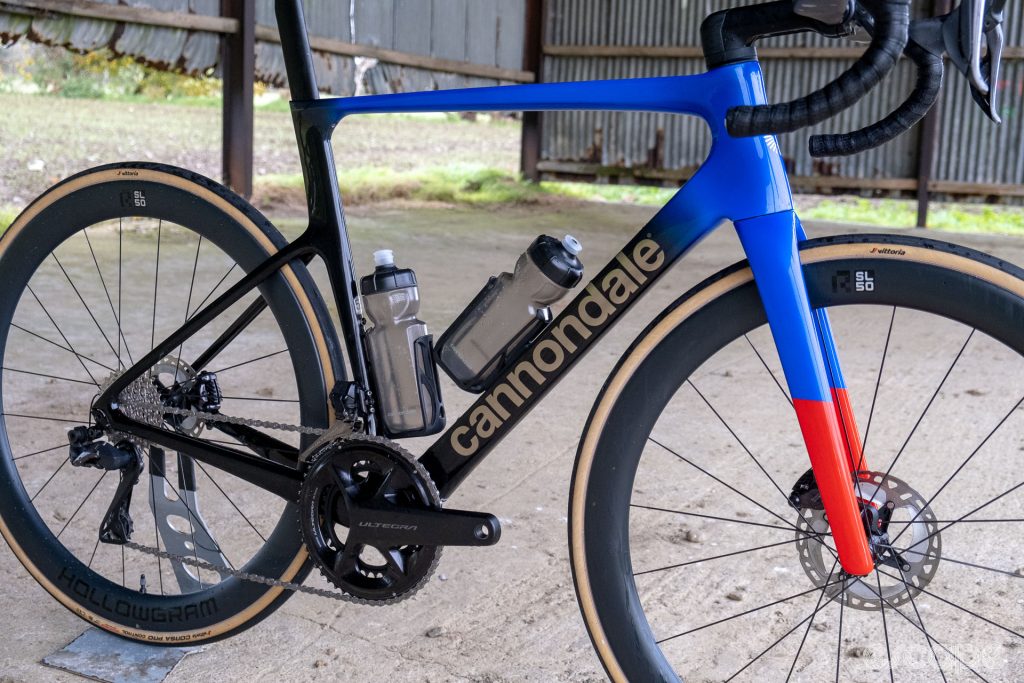
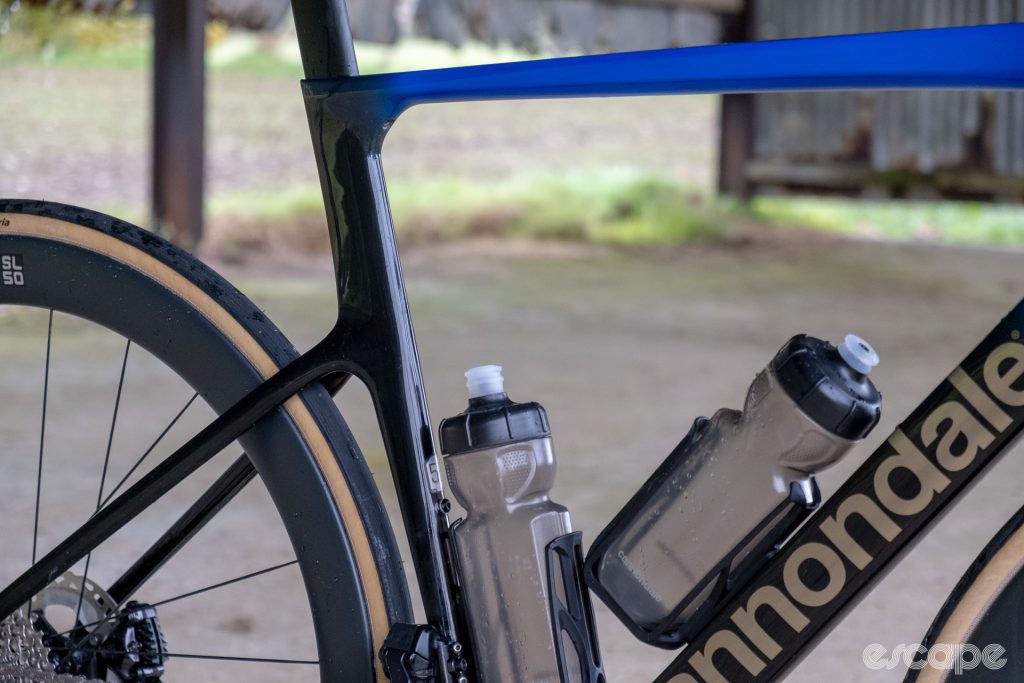
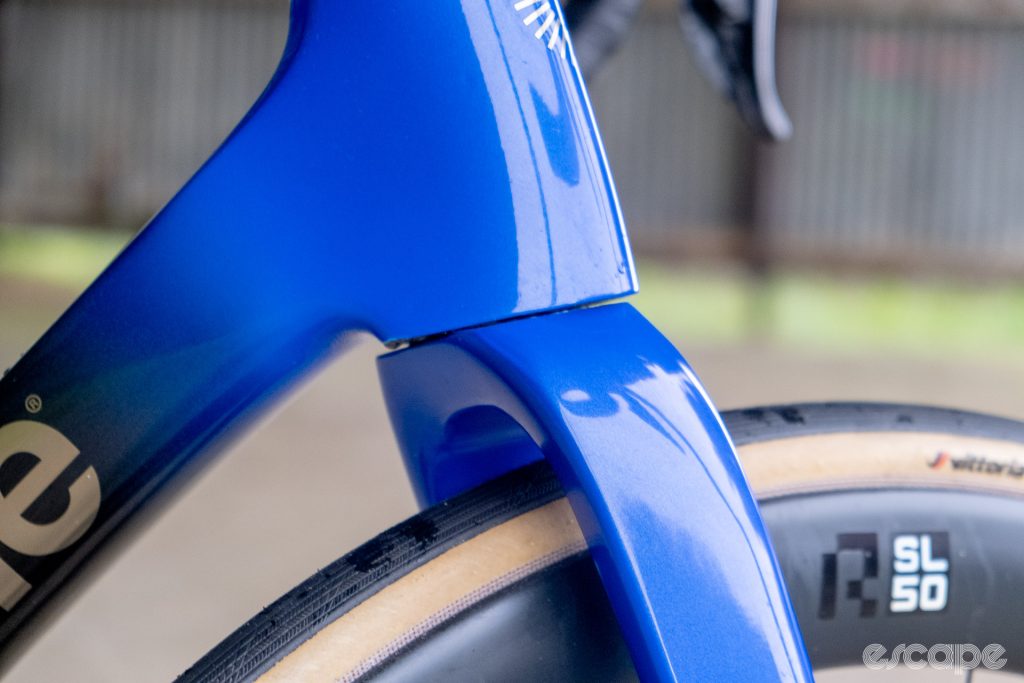
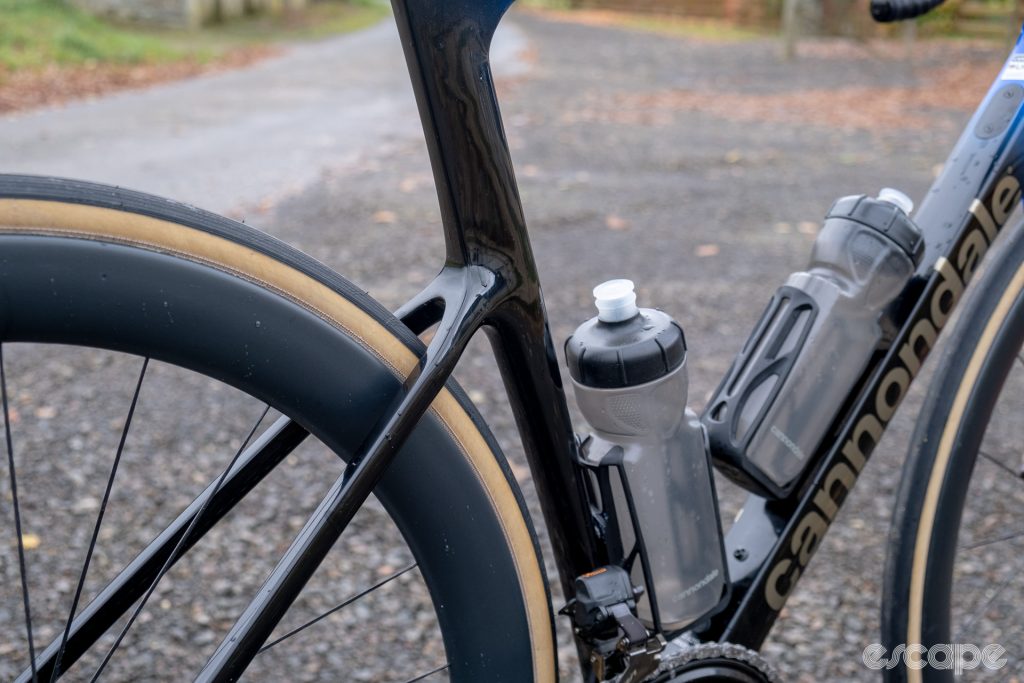

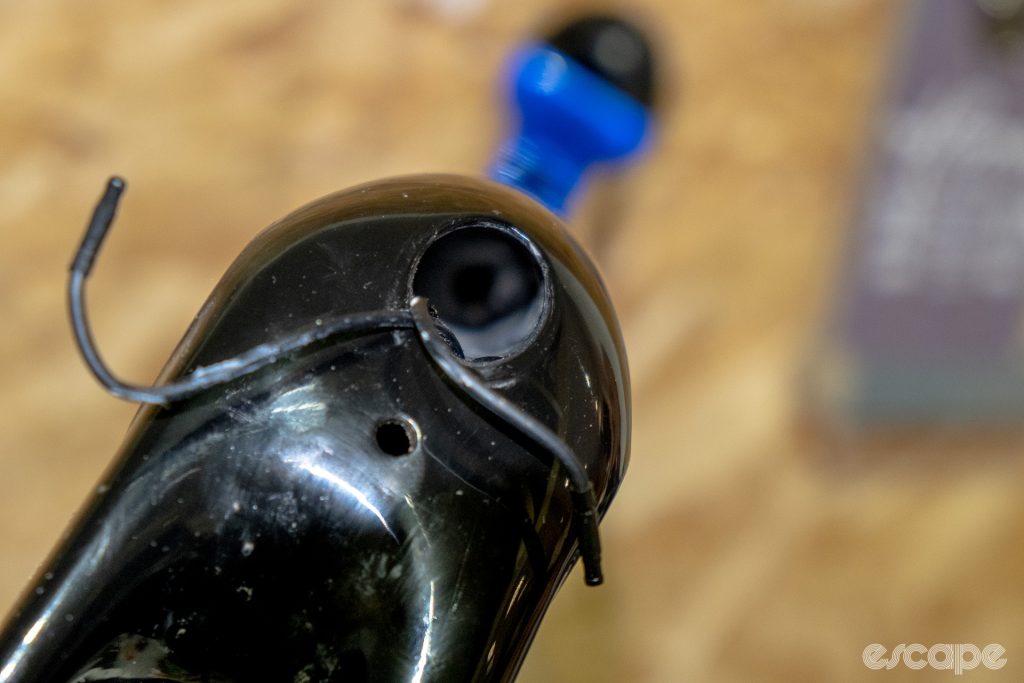
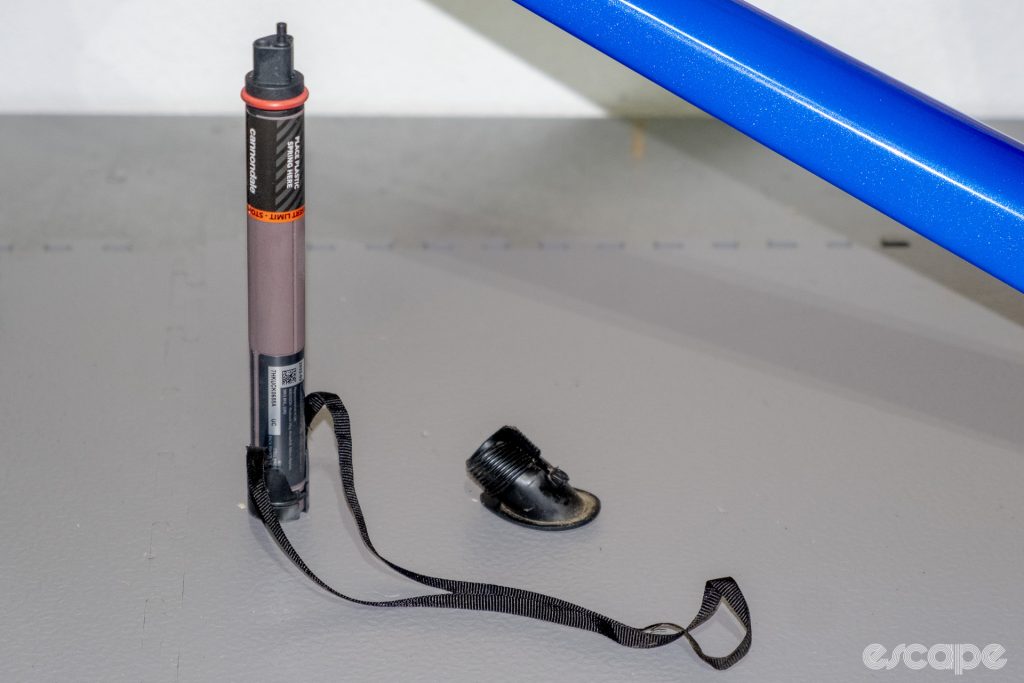
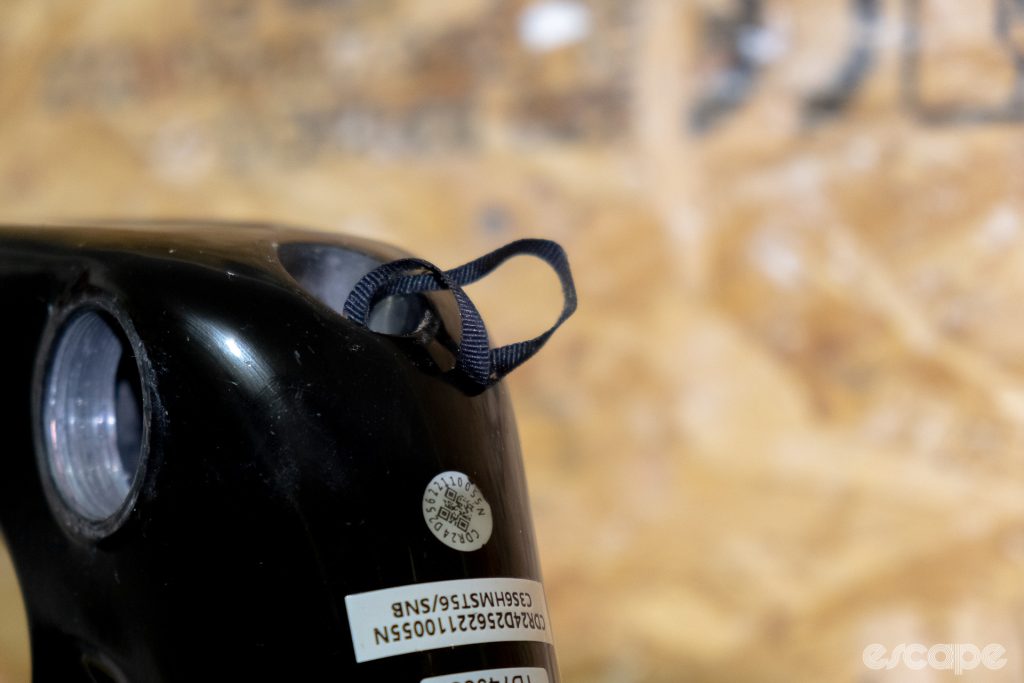
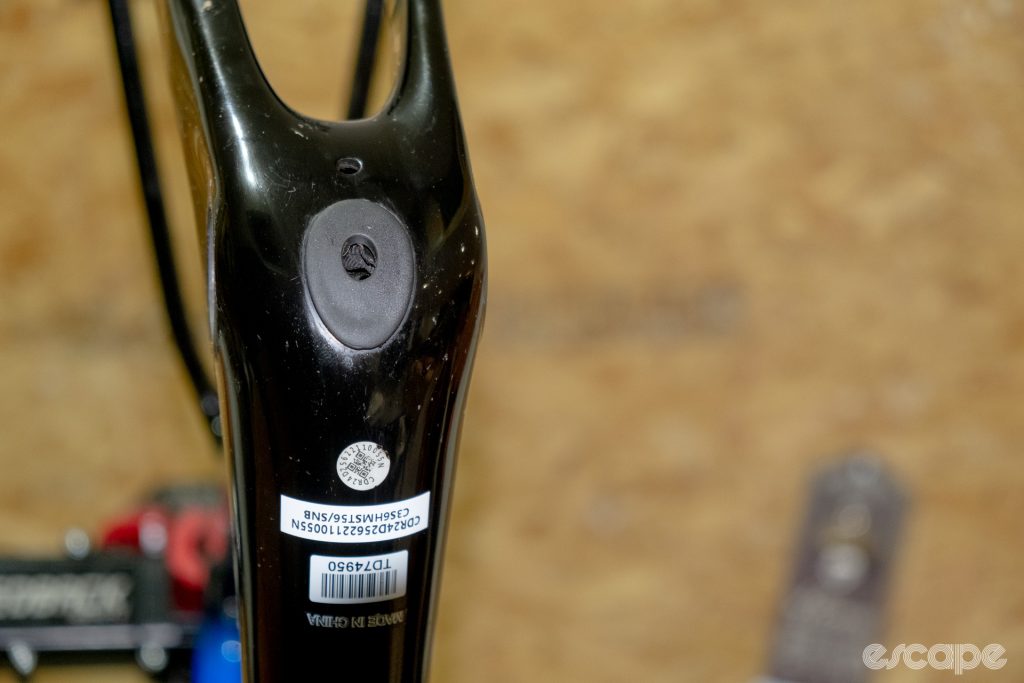

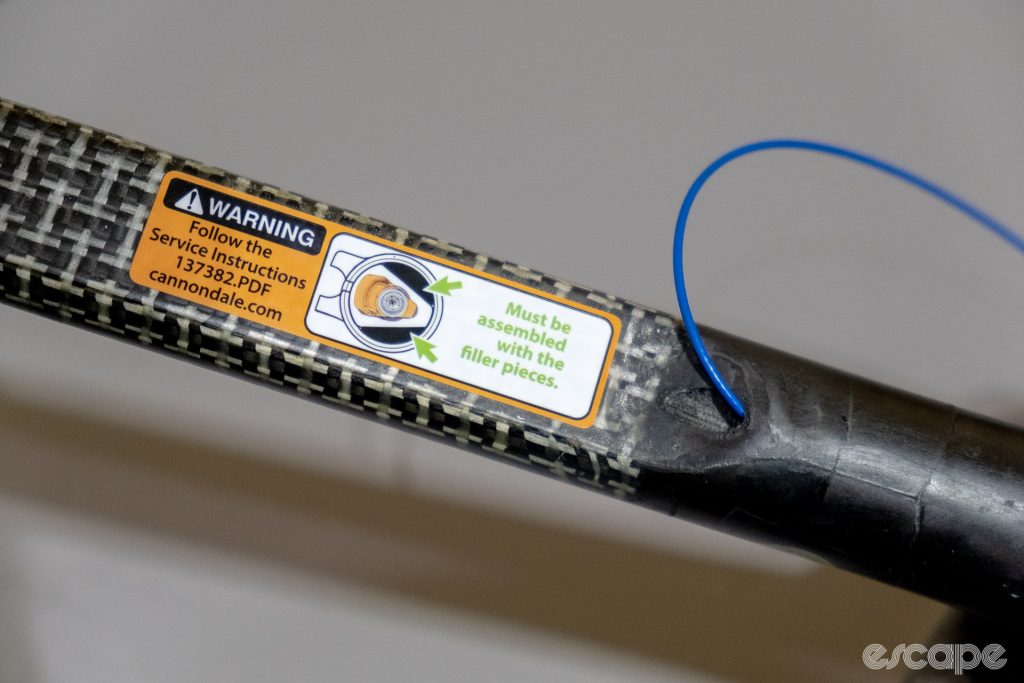
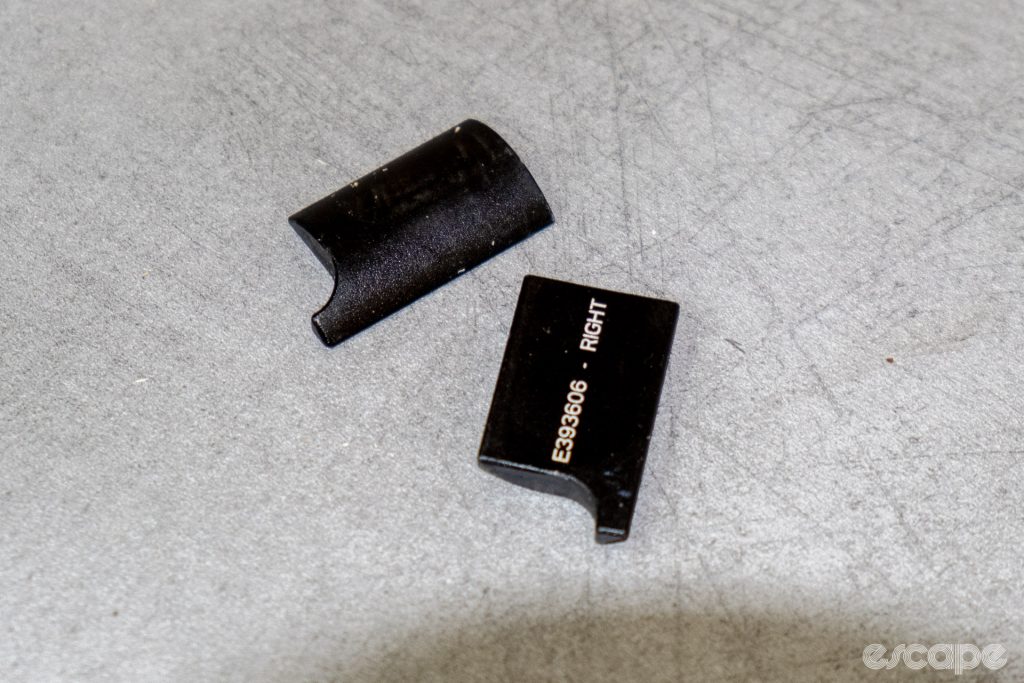

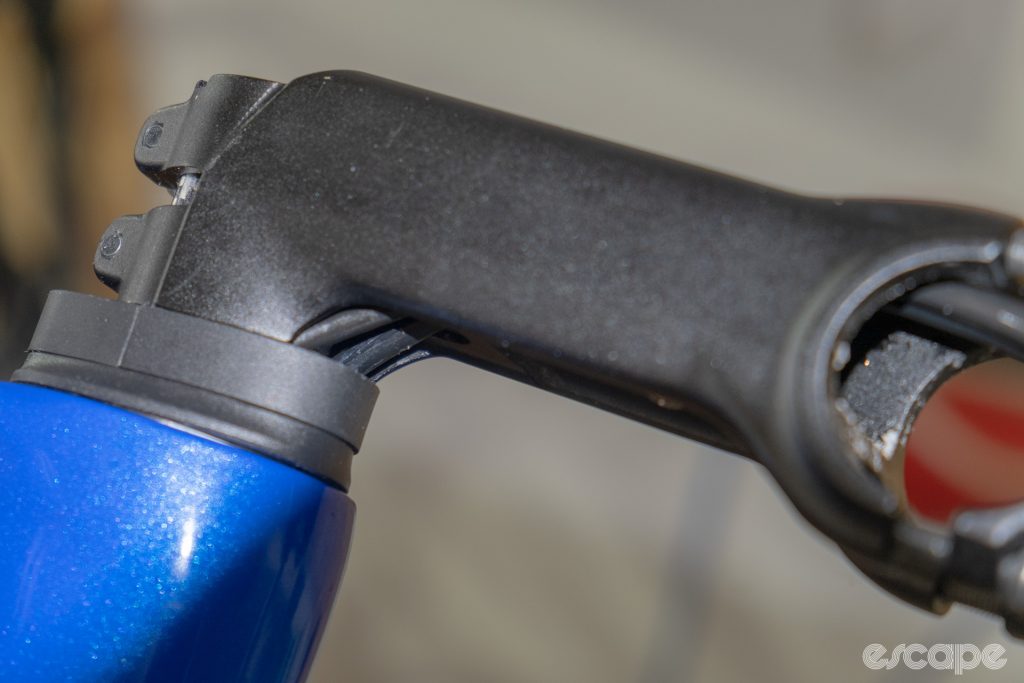
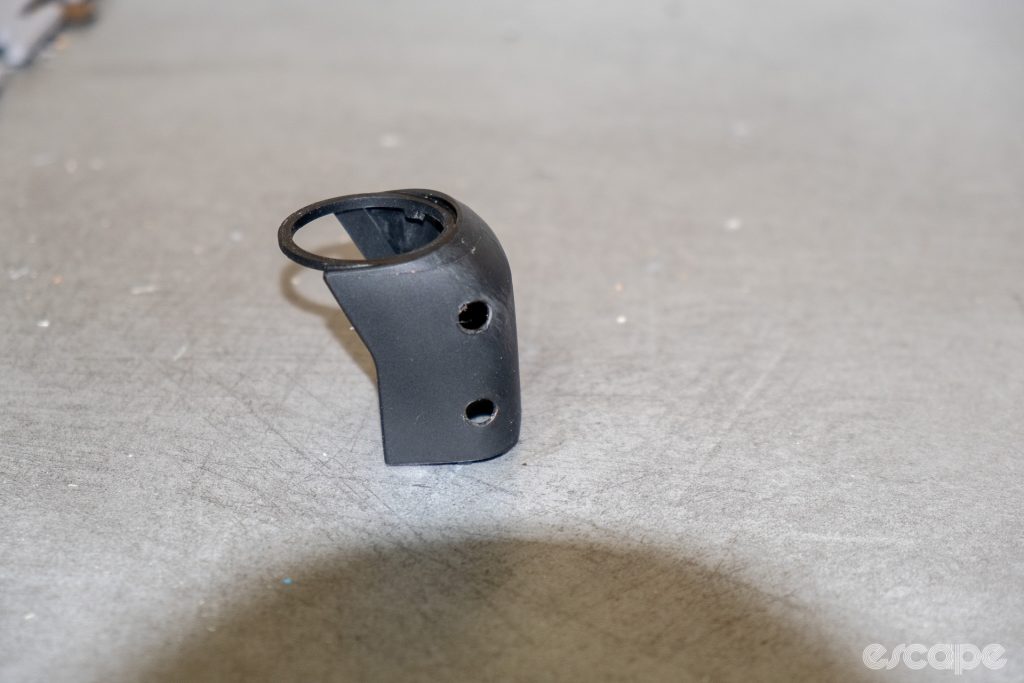
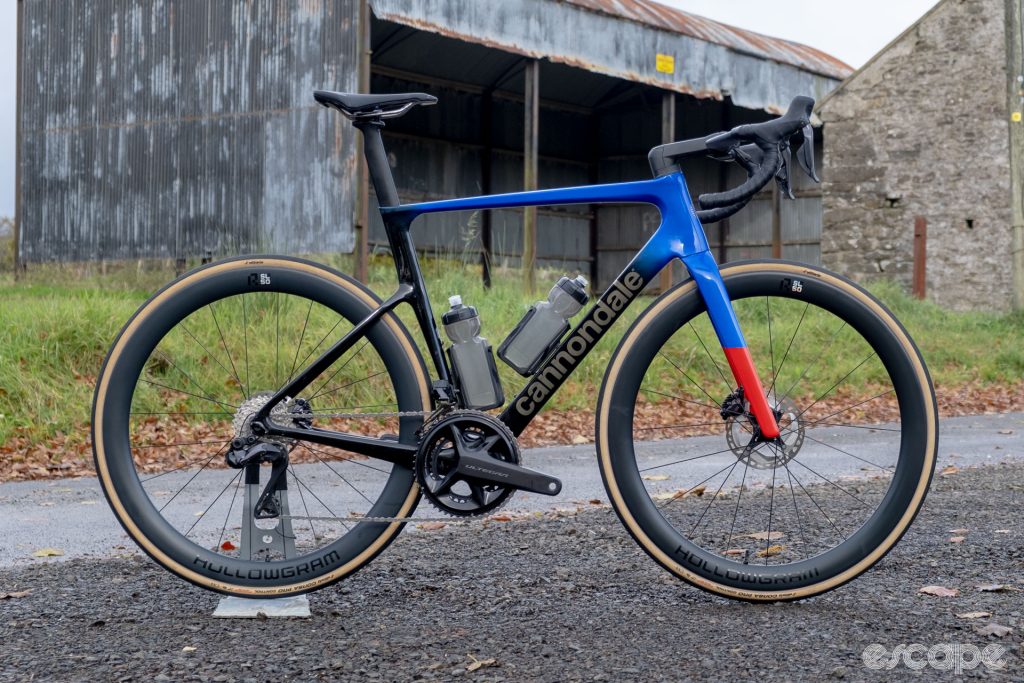
Did we do a good job with this story?
